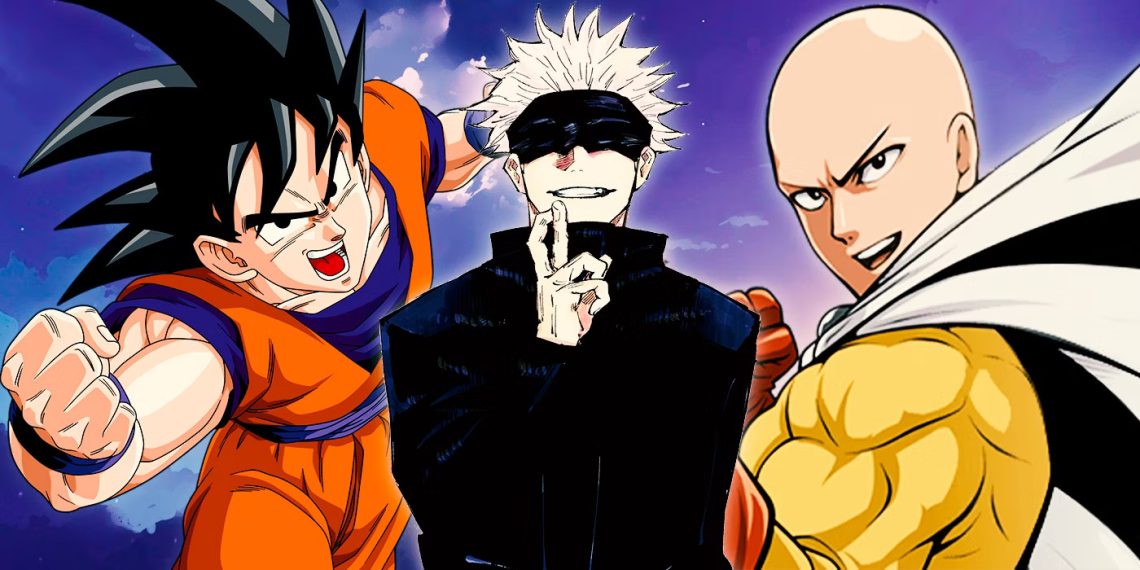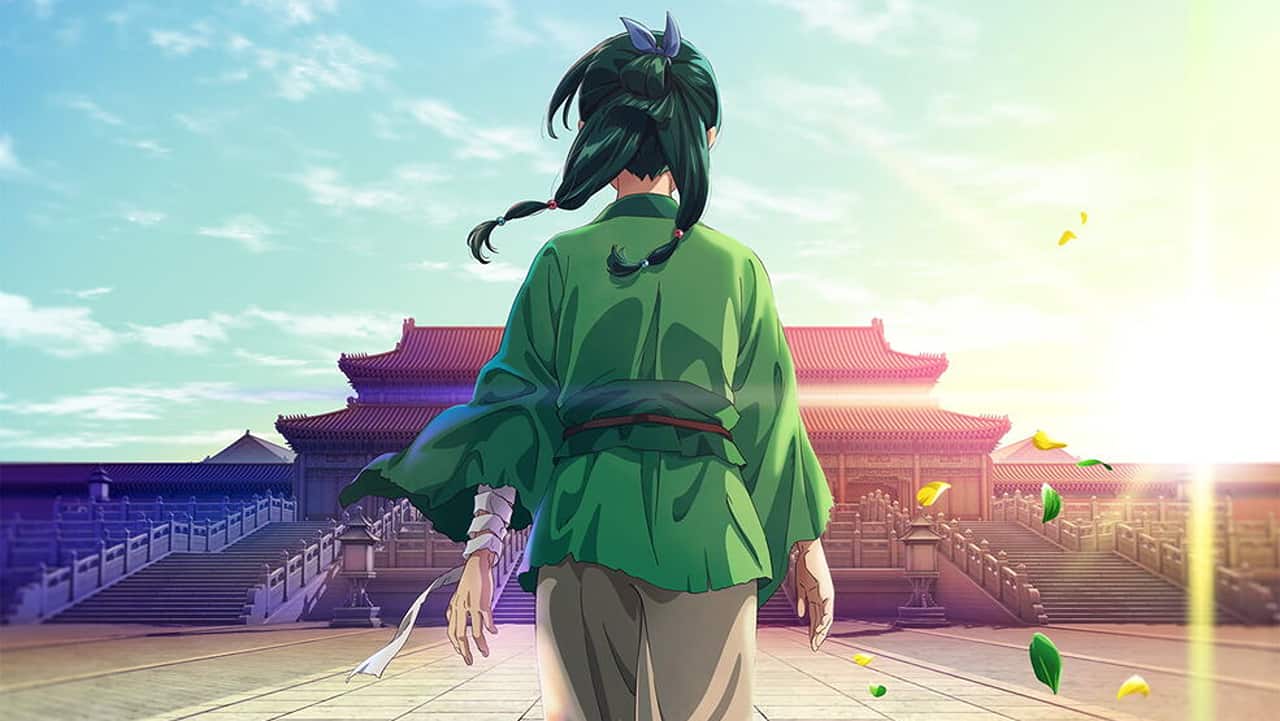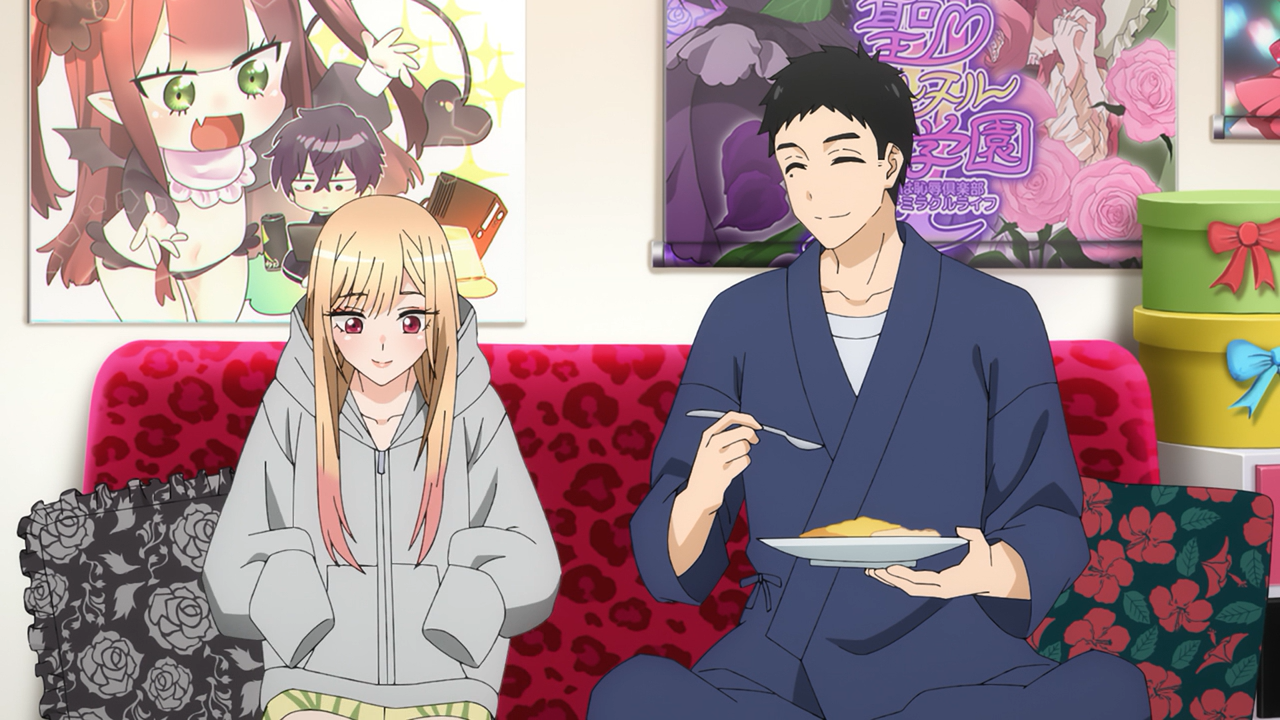Anime has something for everyone, from heartwarming stories to action-packed adventures. For newcomers, finding the right series can be overwhelming, but starting with the best picks makes all the difference. Whether you enjoy intense battles, emotional dramas, or lighthearted comedies, there’s an anime that fits your taste. This list highlights 32 must-watch series that serve as a perfect entry point, offering engaging plots, memorable characters, and stunning animation.
From timeless classics to modern masterpieces, these anime have left a lasting impact on fans worldwide. Each series on this list brings something unique, making them ideal for beginners stepping into this vibrant medium. With diverse storytelling and nice visuals, these recommendations guarantee an exciting viewing experience. No matter your preferences, these anime will keep you hooked and introduce you to the magic of Japanese animation.
32. Black Lagoon (2006)
This series, although telling very basic stories, nevertheless manages to surprise and delight. Mercenaries often board ships and force their passengers to act as hostages.
What really sets this particular model apart is the high quality of the execution. While the first few episodes function more like traditional episodes, the remainder of the series is structured around narrative arcs.
All the tales are interesting since they deal with different topics and are self-contained, yet they all connect in some way. From the “simple cargo of human beings delivery” to the salvage of masterpieces from submerged submarines, everything is possible. It also has a solid understanding of tension creation and maintenance and is very constant.
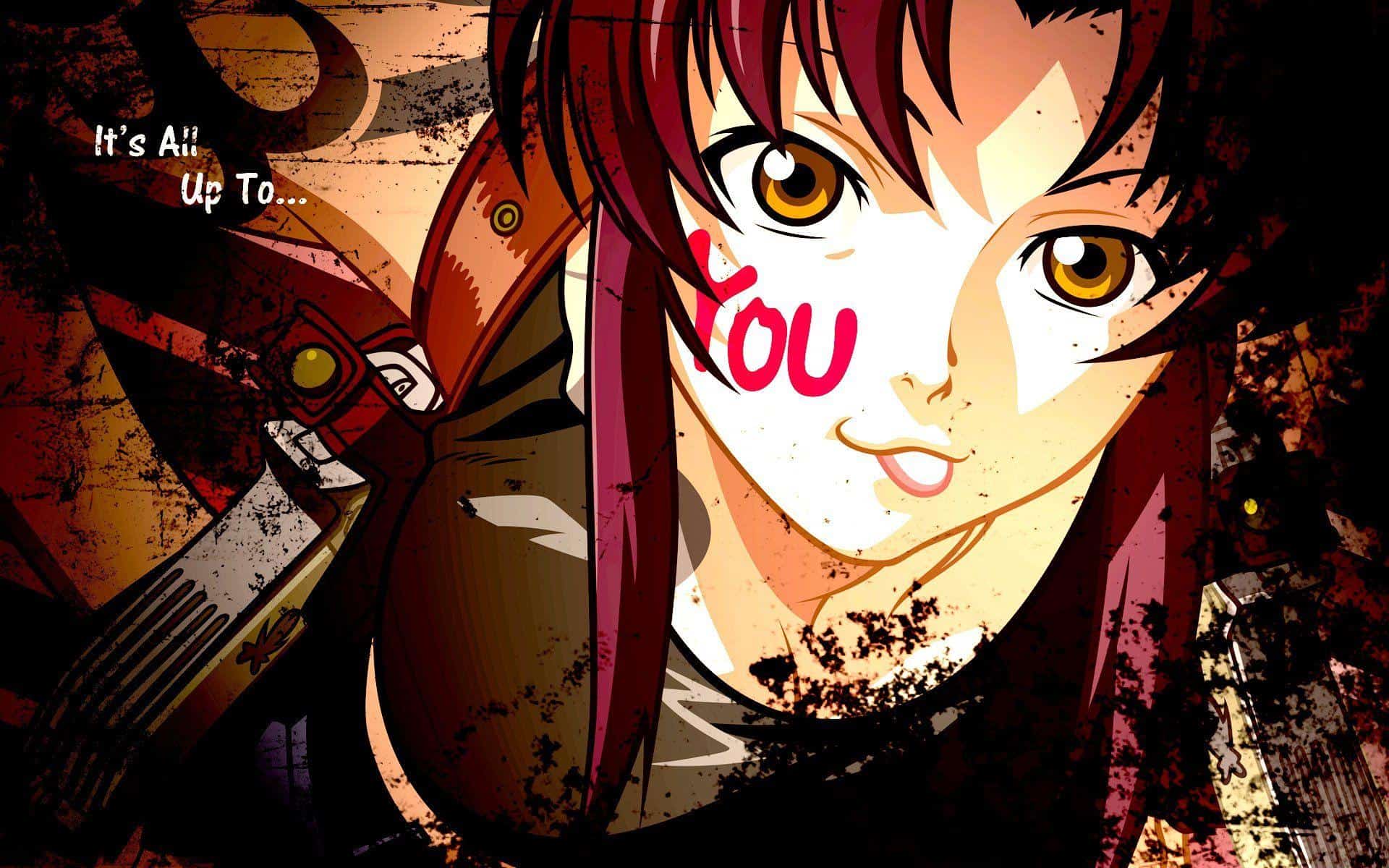
The story is really complex and well-told. Before you tell me it isn’t, consider the questions it raises. Human trafficking, terrorism, guerilla warfare, and Neo-Nazism are all examples of illegal acts.
The typical adolescent won’t understand how this is ignored in the media just because you showed him this. But now it seems like we’re getting off-topic.
Due to graphic violence and mature themes, this show is restricted to viewers over the age of 17. However, I must forewarn you that the show features death.
A great deal of them exist to a very high degree. It’s realistic in part because of how gory and terrible it is. Revy shows up, complete with absurdly bloody killing sprees and lightning-fast reflexes.
In order to keep the audience amused, Revy will sometimes demonstrate her exceptional skills in a shootout by easily taking on and defeating hundreds of opponents. There’s a massive ensemble in The Black Lagoon.
The tone of the story and the unique characteristics of the protagonists and villains are established via the dialogue, which often makes use of multiple curses to convey a point.
That doesn’t mean the only decent thing to say in a discussion is a cuss word. It’s great amusement that won’t give you any cause for discomfort. The show’s supporting cast is what made me appreciate it even more on my second viewing.
31. Log Horizon (2013)
The heroes of Elder Tales, a popular massively multiplayer online role-playing game, were the focus of the plot. After installing the game’s thirteenth expansion pack, Homesteading the Noosphere, gamers find themselves backed up against the screen.
Shiroe, a Level 90 Enchanter, returned to the game after two years to find his old buddy, Naotsugu, a Level 90 Guardian, playing back the game.
Shiroe and Naotsugu, who had previously founded a group called the Debauchery Tea group, have reunited in an effort to learn more about the world around them. Mamare Touno did a fantastic job of conveying the emotions of the Elder Tale characters as they went through the transformations she described.
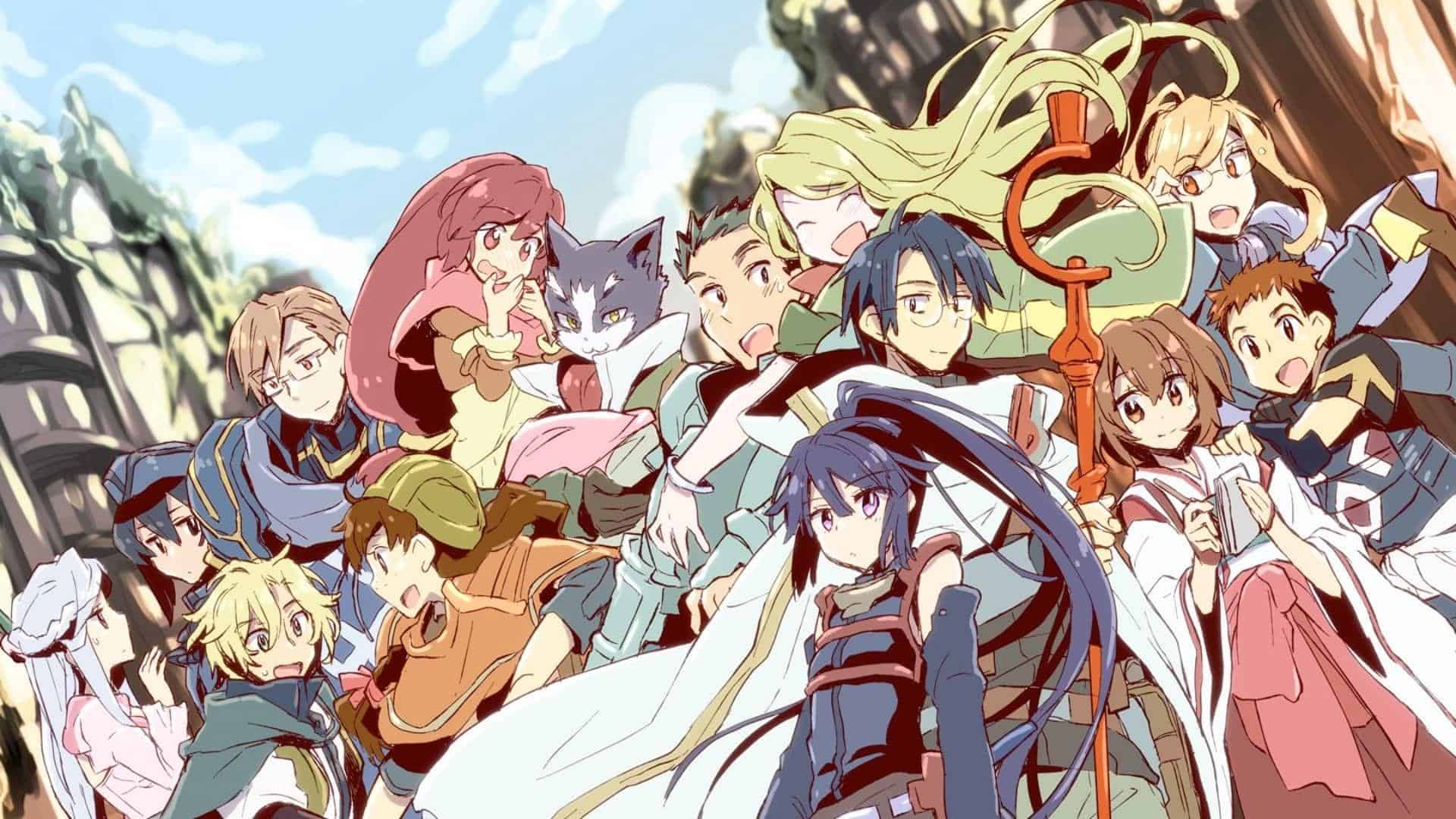
After being stuck in the game’s universe, players switched from directing their avatar to really battling creatures, and the last type was better depicted and had more information. The heroes are wonderfully crafted, and the other characters are well-written as well. Shiroe is a magic user, whereas the protagonist is often a melee warrior or knight.
Log Horizon avoided falling into the trap of stereotypical storytelling by featuring a protagonist who is more cerebral than brawny. If you’re having trouble visualizing abilities and status effects in the anime, the descriptions of fights in the manga can assist.
A role-playing game is not required to enjoy the Log Horizon series, although it is highly recommended if you have never played one before.
It turns out that Kazuhiro Hara’s original artwork was preserved in the anime’s adaptation, which was a huge relief to me, so you can still appreciate the book even if you’ve already seen the adaptation. However, these anime create a magnificent impact on its viewers through its plot.
30. Toriko (2011)
Food is more important than everything else in the universe. It serves as the bedrock upon which national economies are built. The Bishokuya have earned widespread respect as experts in the field of foraging for exotic, difficult-to-obtain edibles.
Our protagonist is typical of these people. Toriko and his new chef, Komatsu, go out to find more exotic delicacies, supported solely by Toriko’s insatiable appetite and the untold millions of yen he will earn.
If they can exact some kind of vengeance on the criminal organization Bishokukai before the latter uses them to manipulate the world’s hungry masses, the victims may have a fighting chance.
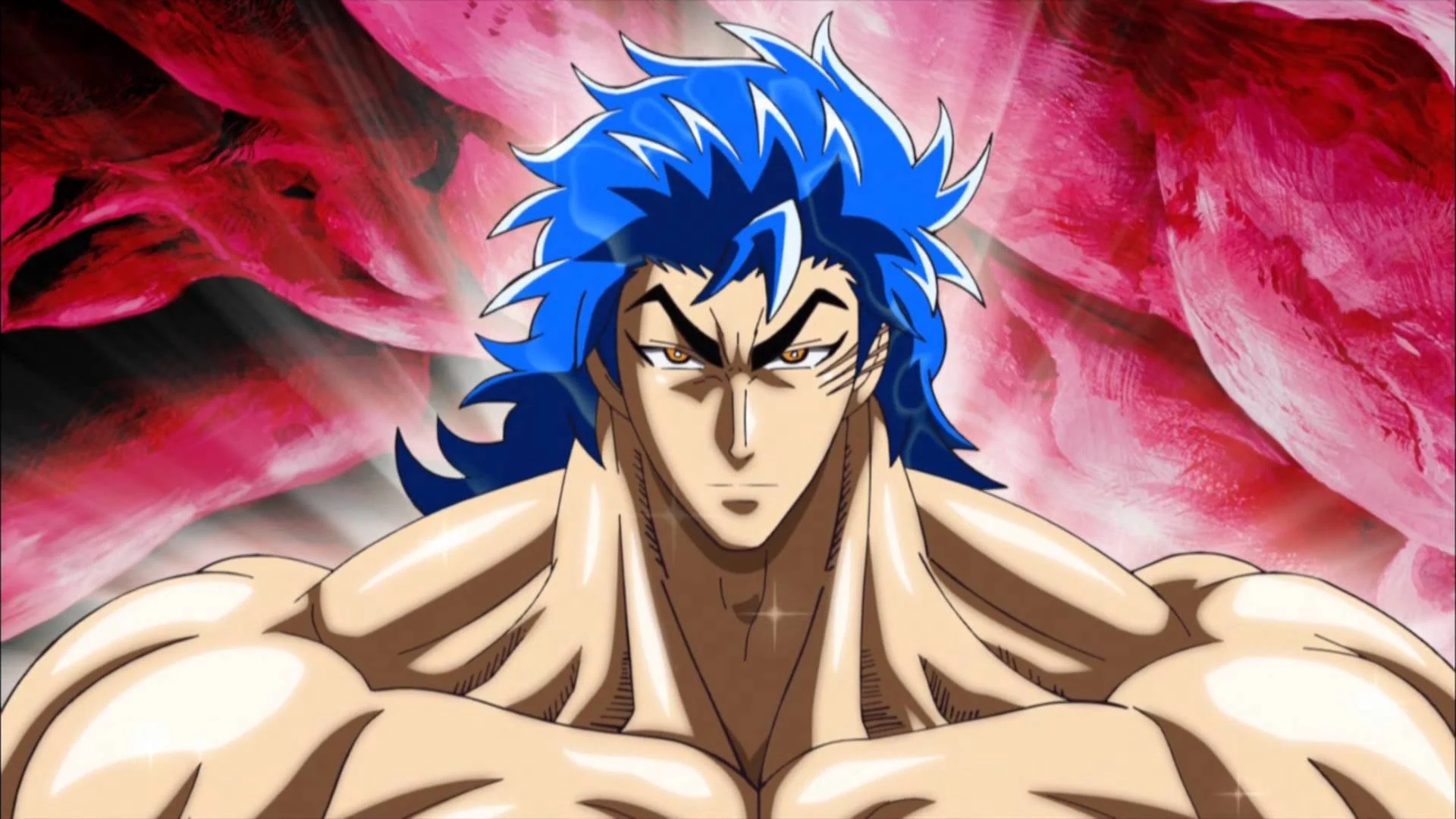
The hero of our story sets out to discover the most delectable dishes in the world. Although it would be inappropriate to use video game language, the best genre label would be “Action/Adventure.” The only limit to the strange and interesting sights in Toriko’s cosmos is the author’s creativity.
Even while the promise of this cola may not be appealing to many readers, the trek the heroes must go over the harsh environment and into the bowels of a vast lethal labyrinth to gather the world’s greatest cola is what makes the novel memorable.
Since the authors of this book spare no effort in making their food and drink sound and look good, you may want to put off reading it until after dinner.
It’s incredible how many different stories there are. Every dish calls for one main ingredient, but it’s up to you to figure out how to get it. Despite being primarily an action series and including action in the vast majority of episodes, the concept of “Beat the guy to get the thing” is seldom used explicitly.
29. D. Gray-Man (2006)
D Gray Man is an intricate tale with many surprising turns. It started out on a very standard note. D Gray Man seemed rather stale and familiar, and when compared to other manga and anime titles, there wasn’t anything that was new or different about it.
To begin with, the story’s direction appeared obvious right away. A solitary protagonist forms a close friendship with his newfound family in a group, and together, they fight against the forces of evil. The hero evolves into a superhuman force capable of vanquishing the antagonist, as is customary in every Shonen manga or anime.
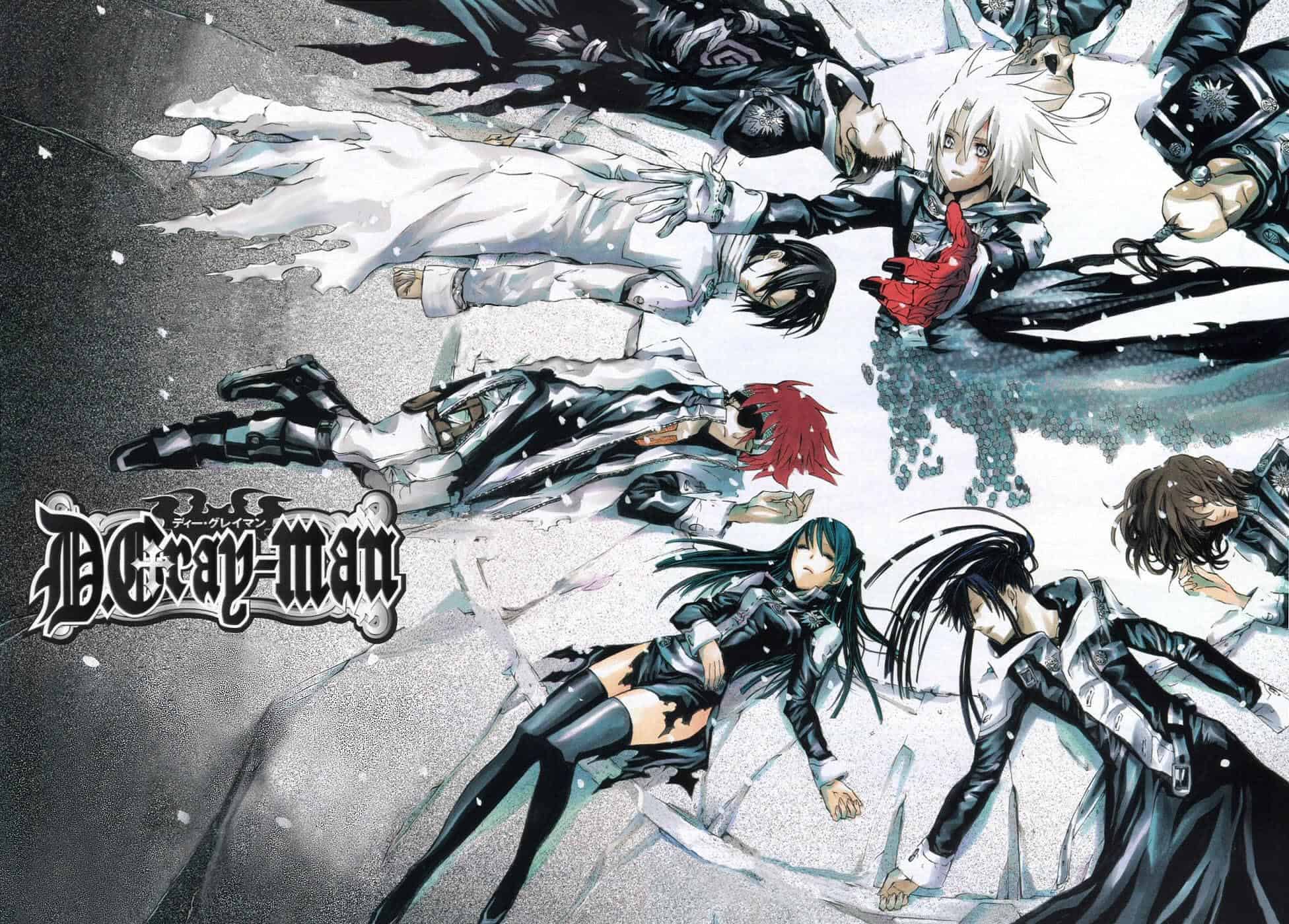
Second, everyone plays into a certain sort of archetype. We’re given an apparently one-dimensional, nice-guy protagonist and a cast of supporting characters with stock temperaments like gloomy, sunny, flirtatious, etc. And there is a battle going on, with the good guys battling the evil guys to prevent global destruction.
Much later, we learn that this shadowy, cynical component of his character is just as integral to who he is as the sunny, affable persona he proudly displays in front of others. At first impression, he looks so kind and approachable that we fail to see the protective barriers he has erected around himself.
His generosity and altruism are so obvious and apparent that it takes us some time to realize his personality is also furious and intransigent. Even the story of D-Day Man is good.
Although the first anime just gave us a taste of Hoshino Katsura’s penchant for narrative twists, and the follow-up movie Hallow only gave us a taste of it as well, the taste was fantastic.
The only reason any of this makes sense is because Allen grows and changes throughout the novel, comparable to the other major players. Like a jigsaw puzzle, the realities about his character gradually fall into place. Allen Walker is only one of the story’s many superbly realized characters.
28. Monogatari Series (2009)
A harem comedy fantasy mystery show, Monogatari may seem like “just another one of those hundreds,” but you’d be incorrect. If you’re not already familiar with the Monogatari Series, you probably won’t be able to appreciate the show’s underlying charm.
Let’s get down to brass tacks: Araragi Koyomi, a high school senior in the series, is the protagonist. She is the human being who was changed into a vampire and then returned as a human.
He was human at the beginning of the narrative, but he still had certain vampiric abilities, such as an accelerated healing rate for wounds.
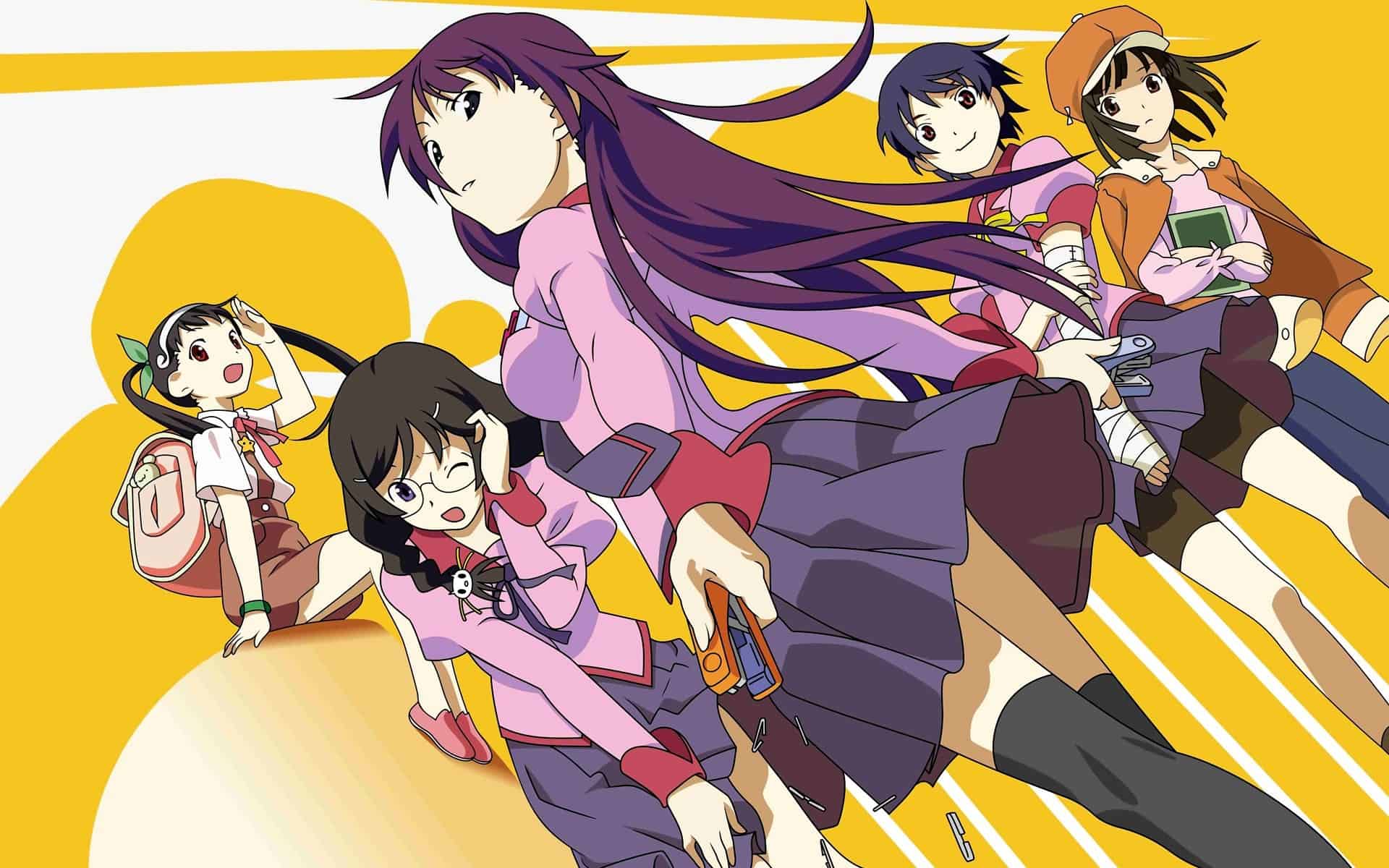
In the opening scene, Araragi is racing up the spiral staircase at his school to go to class in time when he witnesses a fellow student tumbling from a great height. He grabs her but is surprised to find that she hardly registers as an object in his grasp.
Hitagi, one of Araragi’s classmates, is a girl who is both very gifted and appears quite distant; she often sits alone and doesn’t interact with her peers. Araragi, like the protagonists of other Harem programs, must solve the issues of the other females, and each girl has her own story arc; this may seem basic, but it is not.
Most harems I’m familiar with have the female characters express their gratitude to the male protagonist by confessing their love for him. Our hero, Koyomi Araragi, is a senior in high school and can be identified by his enormous cowlick.
This gives him a bit of a thug vibe, and he is a misfit in some way, like the rest of the other characters in Bakemonogatari. But he’s a lovely person and very selfless, maybe even to a fault. It is almost excessive since his selflessness often ends in catastrophic injury or perhaps death.
27. YuYu Hakusho (1992)
Yusuke, a 14-year-old boy, is struck and murdered while attempting to save a younger child. He is given a second opportunity at life, not in heaven or hell, but as a spirit investigator.
At first, he’s swamped with cases, but afterward, we come to the Dark event, a massive event similar to what you could see in Dragon Ball but with a lot more gore. The last example is the Demon World segment.
To begin, there is Yusuke, a sluggard who dislikes exerting himself in any way. However, fighting is what he enjoys doing the most. And he does it rather well. The show’s beating heart, Kuwabara, is up next. Even though he isn’t the strongest member of his squad, he continually serves as the one to inspire his companions.
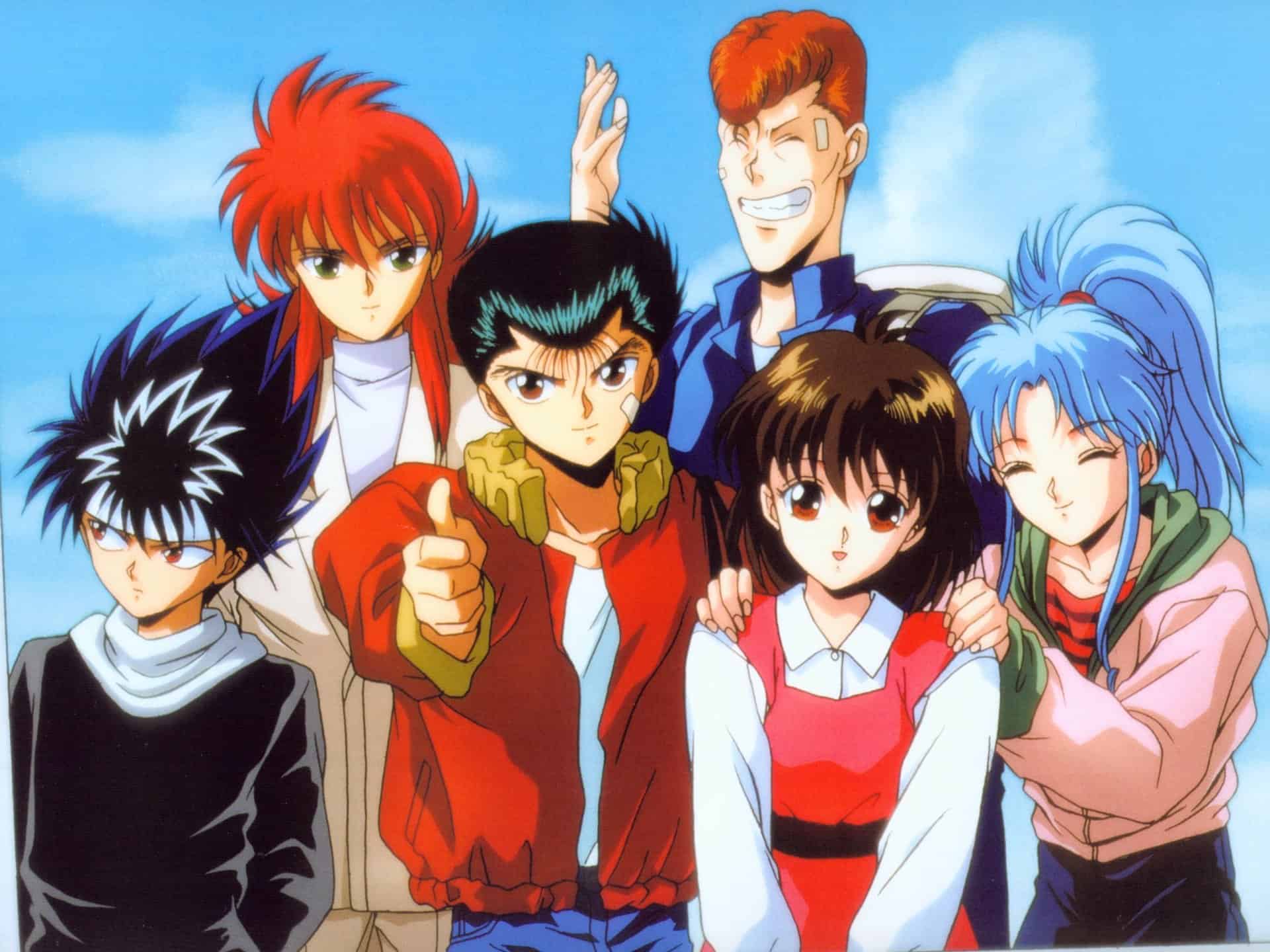
I suppose Yusuke’s opposing adversary is the three-eyed fire demon Hehi. He looks like a Vegeta straight out of Dragon Ball. But Hehi’s gory sense of comedy is awesomely entertaining.
We’ll go over to Kurama next. To hide from the angelic authorities, a demon assumed human form. He may not look like the most dangerous member of the group, but he is.
The program follows Yusuke as he works as a spirits detector to stop ghosts from wreaking havoc on Earth. Yet, there is also the Dark Tournament to consider. It’s a 30–40 episode arc that is among my all-time favorite anime shopping arcs. It’s an amazing opportunity to hang out with the finest villain in YuYu Hakusho, Togoro.
26. Fruits Basket
Cherished for over 20 years, Fruit Basket remains one of the most heartwarming shoujo anime ever made. This beloved series follows kind-hearted teenager Tohru Honda, who discovers a magical secret – the members of the Sohma family she’s living with transform into animals from the Chinese zodiac when hugged.
Their family curse isolates the Sohmas from normal society. But Tohru’s accepting presence helps them confront their pain and reconnect with the world.
Tohru ends up rooming with the mysterious Sohmas after her mother dies, leaving her orphaned. She promises to keep their transforming powers a secret. Living with them tests her resilience, as the Sohma family dynamics prove complex.
The head of the household, Shigure, seems carefree but hides his true feelings behind teasing and flirtation. Yuki, the handsome rat of the zodiac, is worn down by the expectations placed on him. Feisty Kyo harbors self-loathing for being the cat, excluded from the zodiac legend. Though the curse isolates them, the Sohma bonds run deep.
As Tohru interacts with more afflicted Sohmas, she learns how the curse has shaped their lives. Some, like Momiji, put on a cheerful act to hide their sadness at being rejected by their parents.
Others like Hatsuharu struggle to control dual personalities that emerge from their animal spirits. Their stories make the Sohmas sympathetic rather than monstrous.
Tohru comes to understand the burden of their shared fate. Her patience and empathy in response help them open their hearts to possibilities beyond the curse.
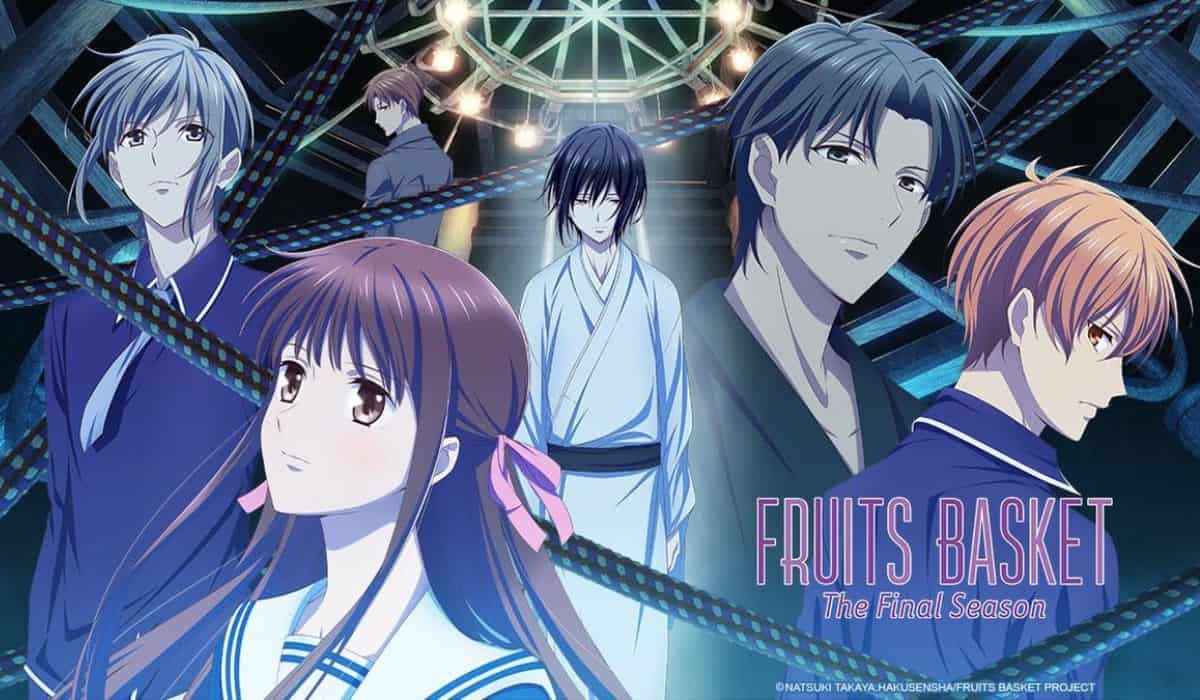
At its core, Fruit Basket is about finding belonging. The Sohmas felt doomed to loneliness, their curse keeping them perpetual outsiders. Supportive Tohru shows them that fate does not define their lives.
Her gentle influence empowers them to confront painful memories and move forward with hope. As they slowly heal, the Sohmas start envisioning a future where the curse no longer traps them. Fruit Basket blends fantastical elements with realistic emotions beautifully.
Of course, Tohru’s relationships with the Sohma boys have shoujo romance flair. Patient Yuki seems like the obvious match for her at first. But temperamental Kyo emerges as the true lead, his prickly defenses hiding vulnerability.
Tohru can see through to his kind heart as she gets past his spiky exterior. As he comes to trust Tohru, Kyo reveals his softer side. Their gradually blossoming connection pays off seasons of pining. Yuki bows out graciously, relieved more by Tohru’s platonic support than romance.
25. Kimi ni Todoke: From Me to You
Kimi ni Todoke is a heartwarming coming-of-age anime that explores the blossoming romance between two misfit high school students. Sawako Kuronuma is nicknamed “Sadako” by her classmates because of her ghostly appearance – long black hair, pale skin, and quiet demeanor.
Her resemblance to the famous horror movie character scares her peers away. Underneath her creepy facade, though, Sawako is a sweet girl who only wants to make friends. Fate intervenes when the popular Shota Kazehaya begins talking to her.
As the two get closer, they gradually open up to each other about their insecurities. Sawako admits her loneliness and desire to be more sociable, while Kazehaya shares his hidden fragility behind being everyone’s “prince.”
Their interactions are touching because neither can believe someone as admired as Kazehaya or as feared as Sadako would want to talk to them. The series excels at portraying teenage vulnerability and the courage it takes to reach out across social divides.
In the beginning, Sawako’s reputation makes their relationship seem impossible. Rumors spread fast when Kazehaya says hi to her in class. Sawako is encouraged by finally having a friend, not realizing his kindness signifies a deeper crush.
Other girls who hoped to get Kazehaya’s attention are outraged that he chooses to spend time with “Creepy Sadako.” But he persists in bringing Sawako out of her shell, helping her talk to their classmates, and showing her that not everyone judges her unfairly.
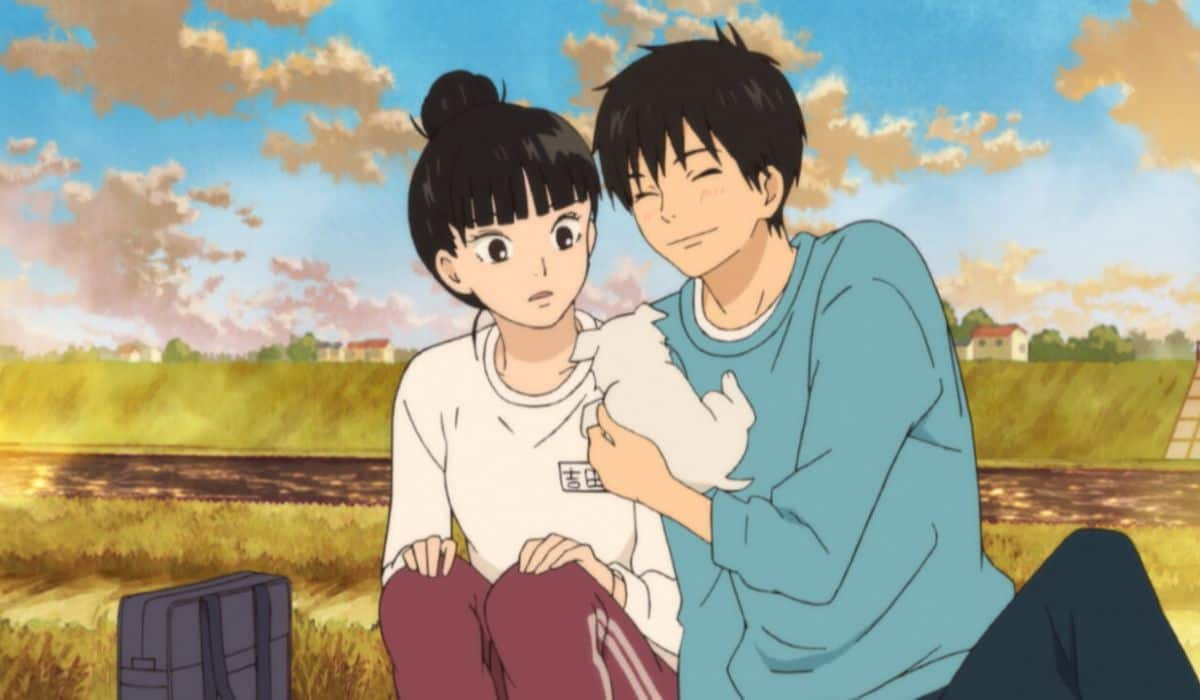
Sawako’s social struggles and isolation feel painfully relatable. Everyone assumed the worst of her based on her ghostly vibe. She did have trouble reading social cues and communicating clearly. But instead of writing her off as strange, Kazehaya approaches her with patience and compassion.
He coaxes her into joining school clubs and talking to people who were once afraid of her. As Sawako becomes more confident, her sweetness emerges.
Soon, her quirks come across as endearing instead of creepy. Kazehaya’s loyal friendship empowers her to make an effort to connect, gradually turning doubters into friends.
Of course, the path of young love never runs smoothly. Misunderstandings and gossip threaten to separate our leads. When Sawako’s new friend, Yano, shows interest in Kazehaya, tensions rise in the friend group.
The drama feels down to earth because it stems from the characters’ relatable insecurities. Sawako doubts that someone as popular as Kazehaya could genuinely like her. So, she lacks the confidence to convey her true feelings, scared of jeopardizing their friendship.
24. Violet Evergarden
Violet Evergarden is one of those anime that just reaches into your heart and squeezes it tightly. I’ll admit I was a bit hesitant to start watching it at first.
The poster made it seem like it might be a saccharine slice-of-life show, all beautiful animation but little substance. Boy, was I wrong! This show delivered an incredibly poignant and emotional story that had me crying almost every episode.
The animation and art style are simply gorgeous. Kyoto Animation really flexed their skills with this one. The backgrounds are fantastically detailed, making the world feel alive and lush. And the way they animate faces and eyes to convey emotion is just remarkable.
During intense scenes, you can see clearly what the characters are feeling through subtle facial expressions and body language. Major props to the animators for creating such expressive characters!
And let’s talk about the characters – they are all so well-written! Violet steals the show, of course. Her journey from an emotionless soldier to an empathetic young woman was beautiful and tragically heartbreaking to watch.
You see her struggling to understand concepts like love and friendship that seem so basic to us after a life of only knowing orders and war. She starts off mechanical but becomes more human as she opens her heart to those around her.
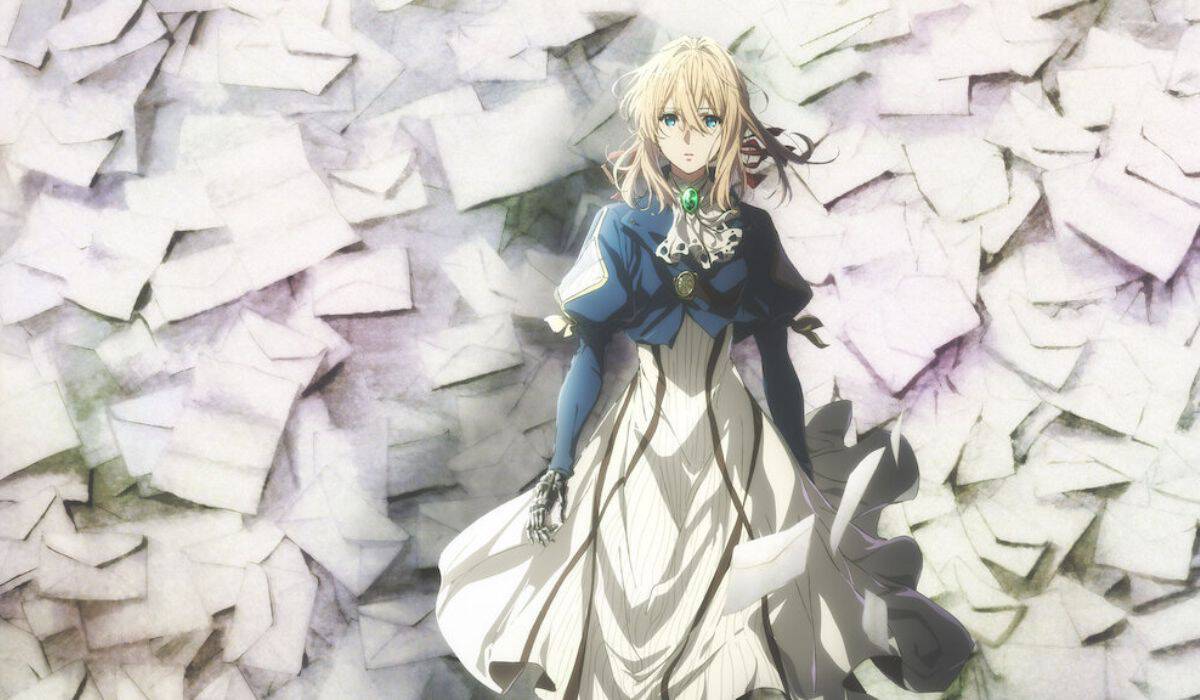
The supporting characters like Claudia and Gilbert also add so much depth. We get glimpses into how the war impacted everyone, not just Violet. Each ‘auto memory doll’ client Violet assists tells a unique story about loss or grief.
The characters feel like real people dealing with trauma and hardship. Even side characters get fully realized development.
The music also perfectly complements each scene. The soundtrack ranges from somber and melancholic during emotional moments to lovely and hopeful during uplifting scenes. The delicate piano and string arrangements are simply divine. And the intro and outro songs capture the feeling of loneliness turning into hope. The music makes the events even more hard-hitting.
23. One-Punch Man (2015)
Saitama, the protagonist of One Punch Man, is a superhero for fun who has a problem. Every villain he faces can be defeated with a single blow.
We follow him as he searches for more formidable foes throughout the series and encounters a wide cast of hilarious characters, among them the cyborg disciple Genos, who has the finest personality design.
Several small stories revolve around a larger danger that Saitama and company must overcome, with a few random adversaries tossed in for good measure.
In doing so, the plot is able to make effective use of the available time without seeming rushed. One-punch knockouts may seem repetitive, but the series features bouts between more than just Saitama and his opponents.
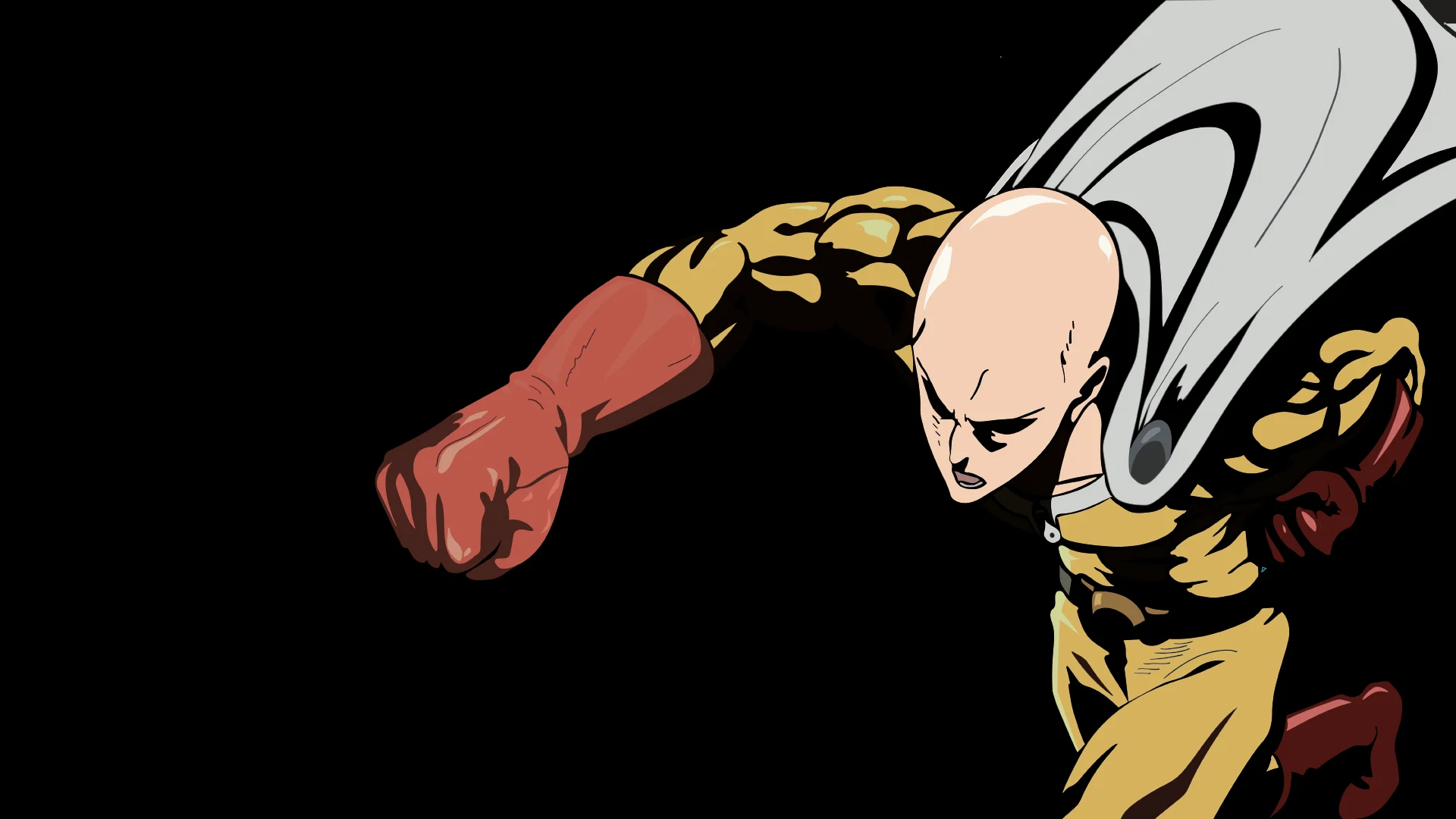
The humor in this program is superb. This is the type of humor that even folks who aren’t familiar with Japanese culture or anime can appreciate.
Fans of Western characters will also love the program since it pokes fun at superheroes. One of the show’s strongest suits is the quality of its artwork. Wide images, which often include a path of ruin left by someone, reveal stunning natural beauty.
Another thing that caught me off guard is how richly nuanced each character is. I didn’t find anybody who seemed uninteresting or unimpressive when compared to the others. Saitama’s unremarkable appearance is something that eventually grows on you.
The music fits well with the style of One Punch Man. There is seldom any downtime, and the music matches the ferocity of the battles by including several upbeat tunes. Many fans like soundtracks very much. They have zero defects, and Saitama’s hair is empty.
There was never a dull moment, a character I didn’t care for, or a battle I found uninteresting. You can see that the cast and crew genuinely cared about making this show, and it’s a great demonstration of how a dedicated group can achieve remarkable results.
22. Naruto (2002)
The Naruto anime series first aired in 2002, based on Masashi Kishimoto’s original manga. Naruto Uzumaki is an adolescent ninja in the Hidden Leaf Village who wants to become the respected Hokage, the village’s top ninja. The series follows his adventures as he strives to achieve these goals.
Sasuke Uchiha, Naruto’s rival and the most intelligent ninja-in-training at the academy, was just too annoying with his bad-boy attitude, and the cherry-blossom-haired kunoichi Sakura Haruno was too clingy. Despite the fact that the trio’s existence was enough to put me off, we pushed towards the end of the anime and learned that it had more to offer than just the antics of three teenagers.
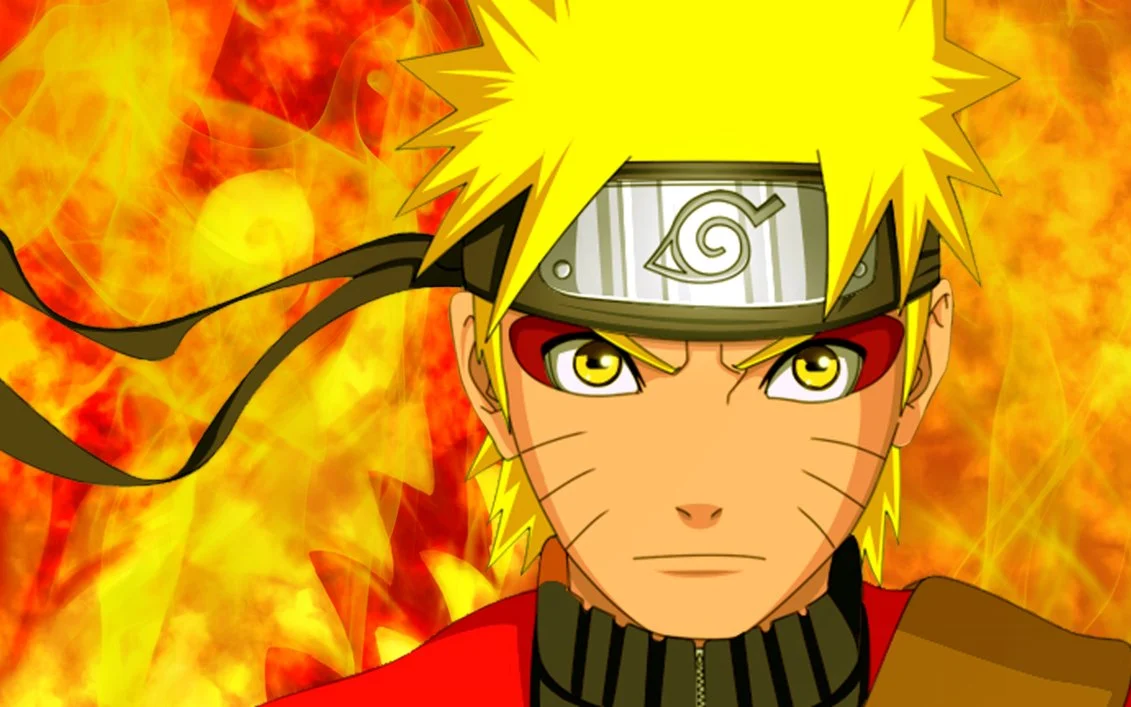
Despite his mischievous ways, Naruto’s narrative is about more than just an orphaned kid who’s hated and shunned by his villagemates. Naruto’s parents were killed by the Nine-Tailed Fox when it attacked their town. To kill the beast, a sealing spell was performed, trapping it within the sole human being strong enough to resist it.
As it progressed, it really appreciable how it showed Naruto, Sakura, and Sasuke maturing from inexperienced ninjas into formidable warriors who can keep their village safe.
Kakashi Hatake, a powerful and extremely cool ninja frequently referred to as the copycat, trains the three as a team. Early episodes of the anime center on the group’s efforts to bond as they grow to work together rather than compete.
Despite the story’s typical slice-of-life format, I found myself engrossed by the plot’s sudden shifts, which revealed the evil necessitated at work, Naruto’s transformation from a spoiled brat to a driven and inspiring hero, and Sasuke Uchiha’s own descent into the darkness and appealing backstory.
21. Fairy Tail (2009)
Numerous magical guilds exist on Earth-land, where casters perform spells in exchange for money. The Fairy Tail mage Natsu Dragneel searches the Kingdom of Fiore for his lost adoptive father, the dragon Igneel. Along the way, he meets a young heavenly mage called Lucy Heartfilia and quickly becomes friends with her, eventually inviting her to join Fairy Tail.
Together with Happy, an Exceed, the two go off on a series of adventures among the other members of their guild, where they will encounter a variety of foes and learn more about their history and the Black Wizard Zeref’s schemes.
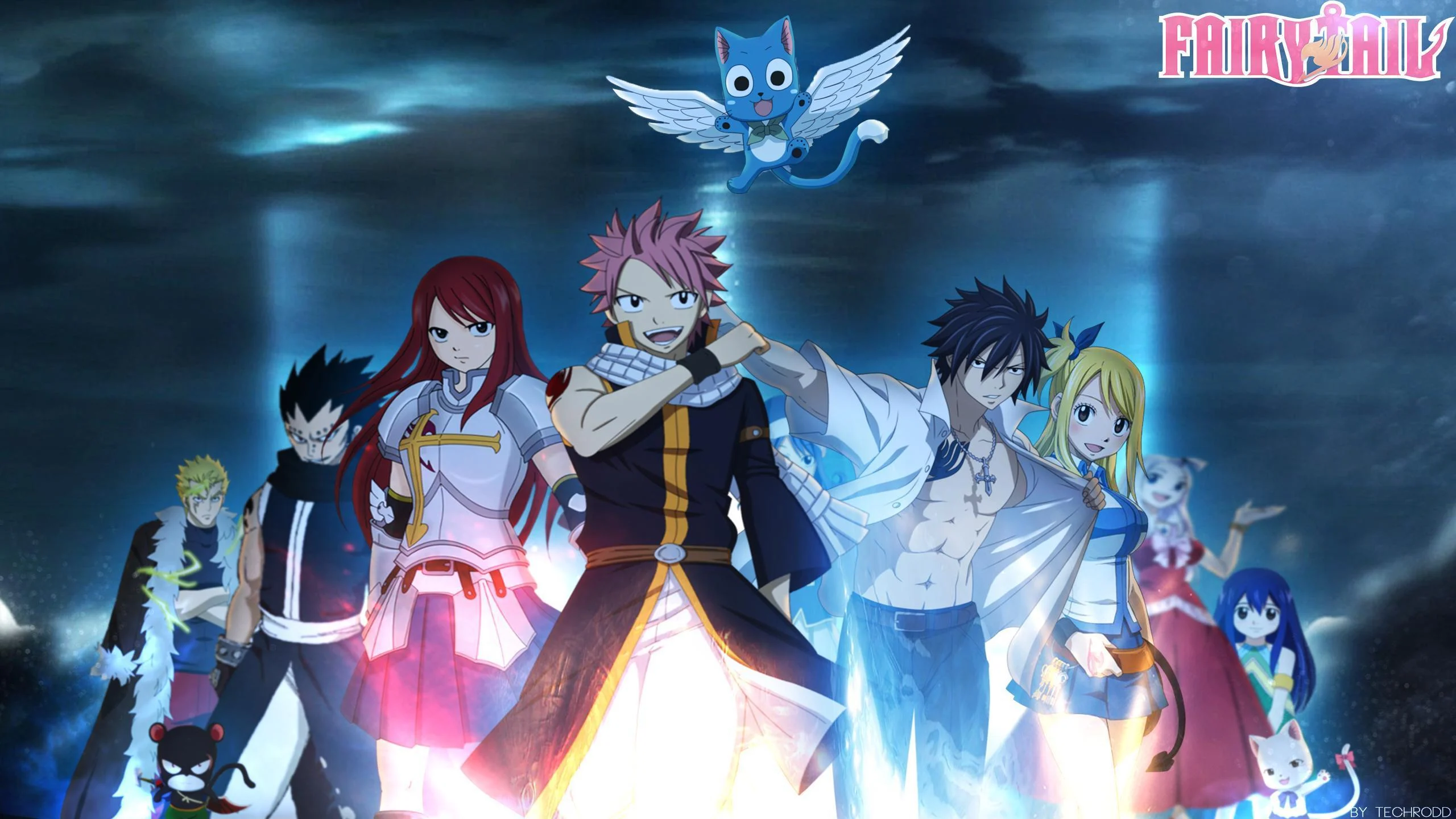
Like many other Shounen series like Naruto, One Piece, and so on, the core of Fairy Tail is the familial relationships formed inside the guild. Even while the debate was so dramatic at times that it created goosebumps as the action unfolded, the absence of genuine loss during lethal conflicts removes certain portions of the danger from the story.
Despite the overarching themes of each arc, Fairy Tail consistently had a subplot that focused on the series’ primary characters. Maybe not all of them simultaneously, but a good chunk of them.
Grey is one such character who underwent consistent change. Lyon, a former classmate who had studied under Ur’s tutelage, appears first in the Deliora arc.
The tale and the accompanying action, though, were what kept us going. Each story arc saw the protagonists’ powers and talents grow, and if my memory serves me well, each arc also brought new developments to the characters’ backstories. Still, we enjoyed seeing the plot evolve and found it compelling, even though we felt it abruptly ended for no good reason.
20. Bleach (2004)
Ginjo and Ichigo pick off where they left off in the last episode, with both still using Bankai and both determined to win. However, Ichigo quickly begins to strike blows at Ginjo, slashing him very deeply and causing him to bleed profusely.
Ginjo gives his best, but he can’t keep up with Ichigo, and he is sent back down to unconsciousness after taking a final blow.
Ginjo, on his deathbed, speculates on what would have happened if he had been in Ichigo’s place and Ichigo had been the one to feel abandoned by Soul Society. Ichigo waits calmly by Ginjo’s side until Tsukishima appears out of nowhere and swings his sword directly at Ichigo. Rukia puts herself in the path, and out of her comes Riruka, who grabs the slice.
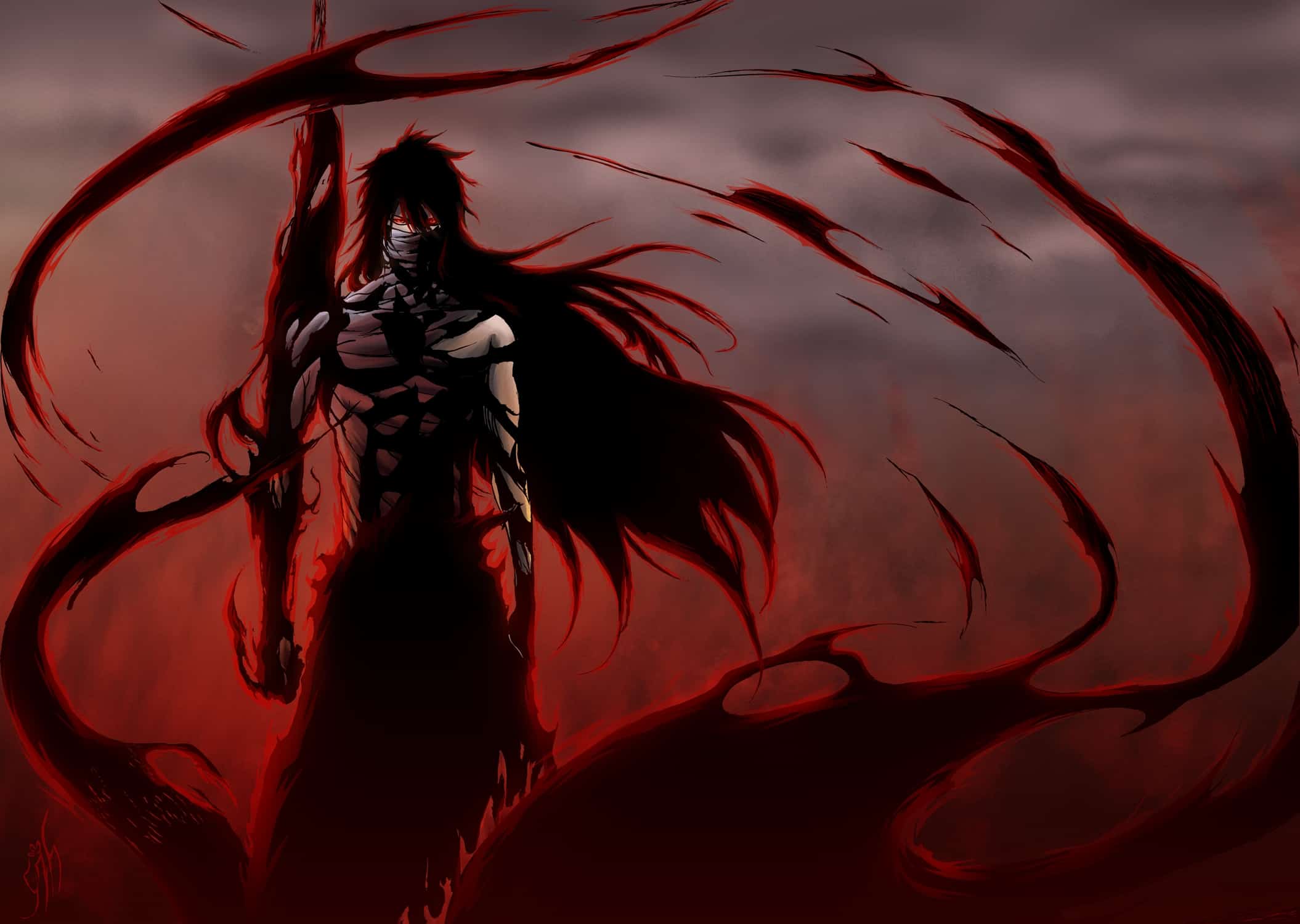
She mocks Tsukishima, saying that they couldn’t help him merely because Ginjo had saved everyone else and that Ichigo had been the one who succeeded and really ended up saving him. Of course, Tsukishima is seriously hurt; his vision blurs, and he coughs up blood as he collapses down onto his knees.
Tsukishima recalls that when he was little, Ginjo came along and told him and his mother that they could be together. Tsukishima now wonders why Ginjo taught him every detail except a term for what to do when he died. Tsukishima is midway through when Shishigawara unexpectedly enters the scene.
Tsukishima is severely wounded, but Shishigawara insists that he is the biggest of all, therefore, he can’t die, claiming that he is indestructible, so he carries him along on his back. Then Tsukishima figures out that Shishigawara is experiencing the same emotions he has towards Ginjo. Digging more deeply may give you spoilers.
19. InuYasha (2000)
Kagome Higurashi, a regular fifteen-year-old girl, has her life turned upside down when a demon pulls her through a cursed well on the property of her family.
Kagome doesn’t fall to the bottom of the well but instead finds herself reborn in the horrific Sengoku era of Japan 500 years in the past, discovering the demon’s actual aim, a wish-granting diamond called the Shikon diamond, still residing within her.
When the precious gem is accidentally shattered during a fight with a resurrected demon, Kagome recruits a young dog-demon halved human hybrid called Inuyasha to assist her in recovering the pieces and keeping them out of dangerous hands.
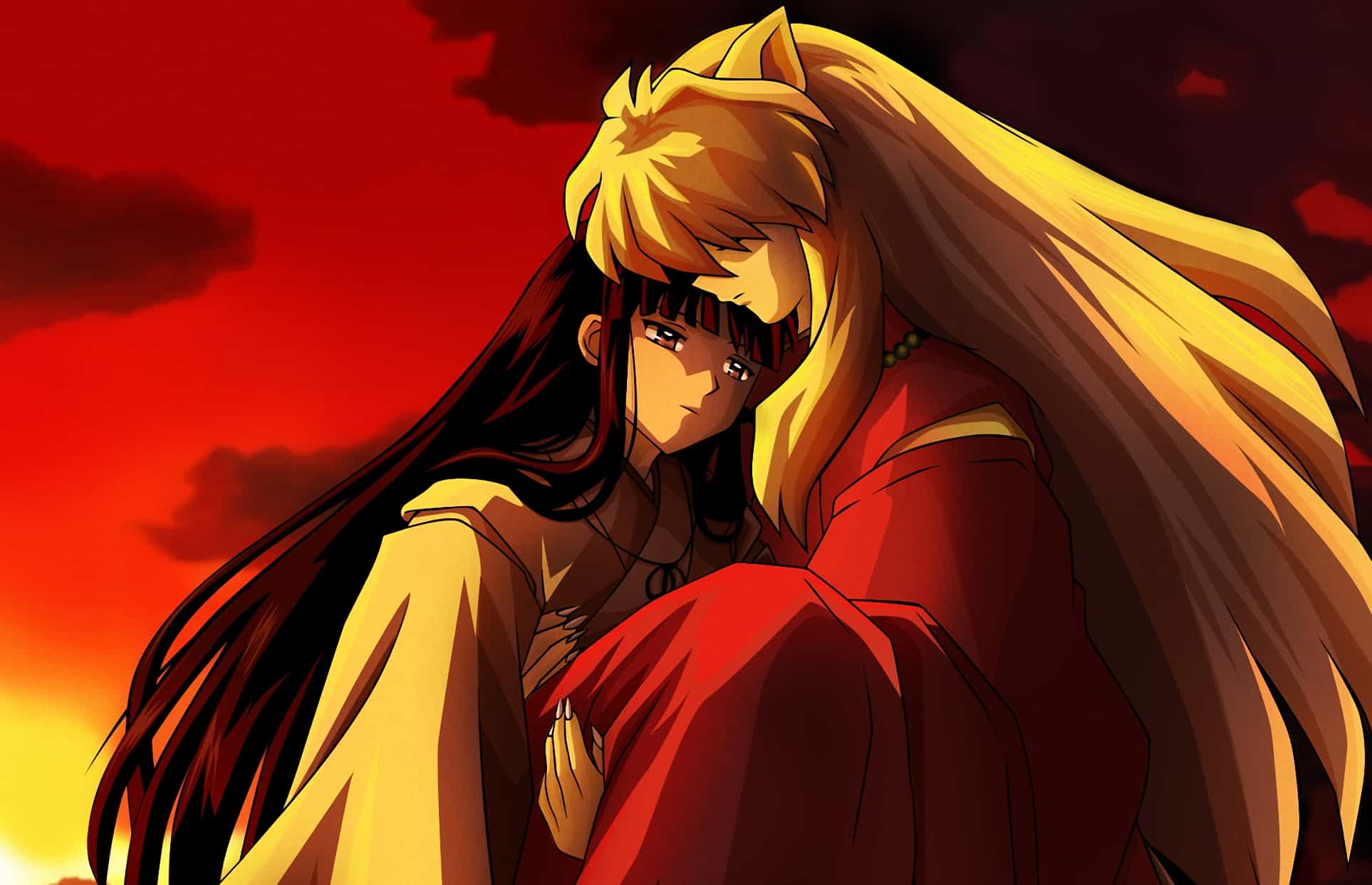
The fox-demon Shippo, the wise monk Miroku, and the deadly demon slayer Sango are all on board to help Kagome and Inuyasha on their journey. To uncover the power-granting shards dispersed throughout feudal Japan and cope with the perils that emerge, they must put away their divergent opinions and work together.
The storyline was fantastic as well. Seeing Kagome and Inuyasha get closer was one of the most enjoyable parts for the viewers of the series.
It was also interesting to witness how the members of Inuyasha’s group became close friends. The conclusion of Inuyasha was among the best I’ve seen in an anime. The surprising turn of events at the end was fantastic.
In general, I thought these anime were fantastic and liked watching them. The story, characters, romance, humor, and action were all highlights of the series. It pleased me to get to see this anime since it quickly became one of my favorites.
18. Romeo x Juliet
The classic tale of star-crossed lovers Romeo x Juliet has been adapted and retold countless times over the centuries in various forms of media. However, one highly unique and fascinating retelling of this legendary story emerged in the late 2000s in the form of the Japanese anime series ‘Romeo x Juliet.’
Produced by Gonzo and first aired in 2007, this anime adaptation transplants the classic tale of the Montagues and Capulets into a richly fantastical steampunk setting. Abandoning the classic renaissance era of Verona, ‘Romeo x Juliet imagines the two families embroiled in conflict in a divided city-state of Neo Verona, with each family controlling their own half separated by a wall.
Amid this divided, war-torn city, young Juliet finds herself falling for a mysterious boy named ‘Romeo.’ However, she is unaware that Romeo is, in fact, the son of the rival Montague family leader.
Their forbidden love blossoms, but all the while, violence continues to plague the streets between their families’ factions. Much like the original play, their love serves as a glimmer of hope, trying desperately to blossom amid the chaos and bloodshed consuming the city around them.
‘Romeo x Juliet’ weaves a visually stunning tale of young love fighting against the tides of fate and family honor in a truly unique reimagining of Shakespeare’s classic masterpiece.
The anime series was praised for its richly detailed steampunk visual style and production values that brought the world of neo-Verona to life. Vivid colors and intricate designs populated the different factions and locations we see.
From Juliet’s Capulet mansion adorned with greenery and ornate decor to the underground slums of the neutral city dwellers shrouded in shadows. Advanced steam-powered technology also blended seamlessly with more traditional sword-wielding warriors and nobility.
Large airships floated over the city alongside the more modernized mag-trains that transported citizens. This punkish blend of low and high-tech aesthetics formed a truly breathtaking backdrop for the unfolding drama between Romeo and Juliet.
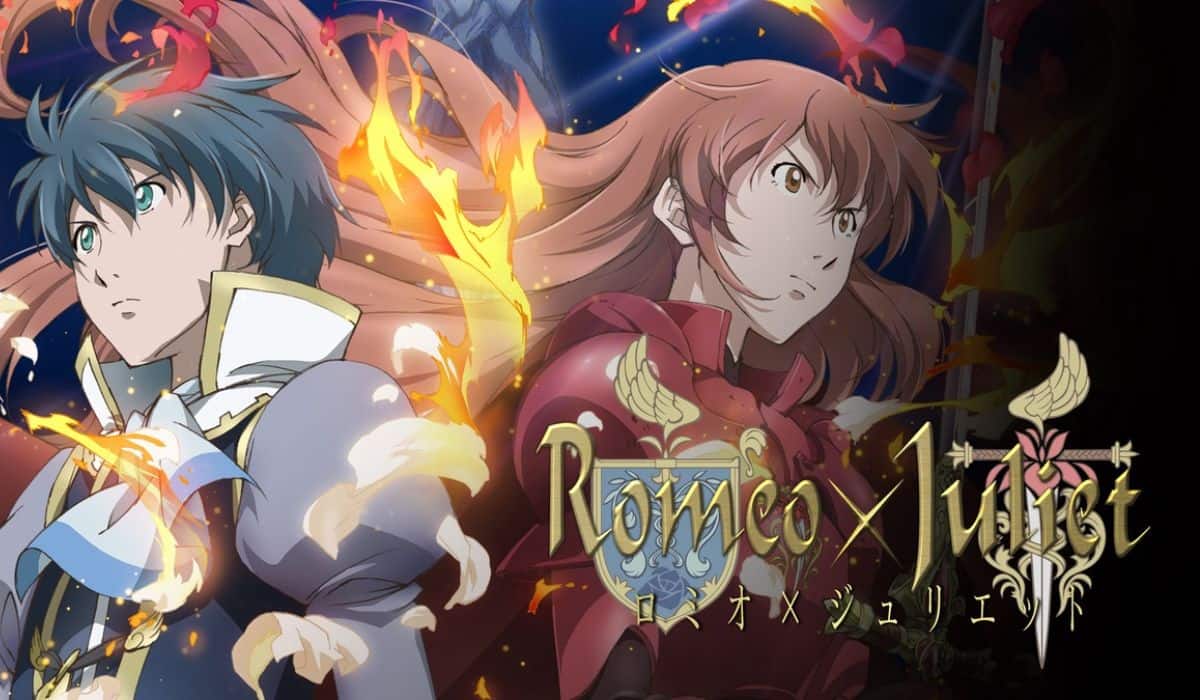
Beyond its visual flair, the plot also took notable liberties with the source material to craft new dramatic twists and intrigue. In particular, more context was provided for the strained relationship between the Montagues and Capulets, with the origins of their feud being tied to a mysterious event in the past known as ‘The Night of the Black Sun.’
Political elements were also incorporated to diversify the story beyond just the family rivalry. The neutral city council and influential Prince Essex became involved in attempts to end the confrontation. However, betrayals and resistance on both family sides continuously hamper peace efforts. These new story layers enriched the anime’s interpretation of Verona beyond just focusing on Romeo and Juliet alone.
The characters themselves were also dynamic adaptations that built upon their Shakespearean templates. Romeo, while still retaining his passionate romantic nature, was portrayed as more reserved and troubled by the violence consuming his home. Meanwhile, Juliet exhibited greater agency and intensity compared to past female adaptations. She actively pursued Romeo out of her own will rather than just passively accepting her family’s demands.
Side characters like Benvolio, Lady Montague, and Nurse also received expanded roles that amplified the family drama and consequences of Romeo and Juliet’s love. Even villainous characters like Tybalt were given understandable motivations rather than presented as one-note antagonists.
17. Taisho Otome Fairy Tale
When it comes to anime centered around fantasy and magic, studios will often turn to European settings like Victorian London. However, one magical girl series chose to tell an enchanting tale set in another era – 1920s Taisho period Japan.
Produced by Brain’s Base and airing between 2013 and 2014, ‘Taisho Otome Fairy Tale’ transported viewers back in time through the eyes of its plucky heroine, Yōko. Absorbing audiences with its charming storytelling and gorgeous Taisho aesthetic, ‘Taisho Otome Fairy Tale’ allowed viewers to step into a bygone romanticized era of Japanese history through the lens of magic and fable.
The story primarily followed Yōko, a spirited young girl who dreamt of adventure beyond her village. After her grandmother passes away, Yōko is shocked to discover she has come into possession of magical abilities – the power to transform objects with paint.
Soon, she becomes embroiled in fantastical missions to track down magical entities known as ‘Yōkai’ disrupting the town, with the mysterious shop owner Tōru acting as her mentor. Meanwhile, Yōko also finds herself drawn to the enigmatic but kind Masked Prince who frequents the village.
Over the course of the series, Yōko blossoms into her new magical role while experiencing the changing Taisho world around her through her travels and encounters. What truly brought the Taisho period to life was the animation studio’s refreshing dedication to historical accuracy in the show’s aesthetic and ambient details.
From the traditional wooden architecture and sliding paper doors of buildings to the antiquated transport like rickshaws and trams, the environment felt wholly authentic to the early 20th-century Japanese countryside and cities depicted.
Character designs emphasized elegant kimonos in vibrant floral patterns and obis wrapped with precision. Backgrounds populated with period foods, technologies, and activities transported viewers straight to 1920s Japan. Even smaller touches like lanterns, calligraphy, and other furnishings offered a rich cultural portrait of the era.
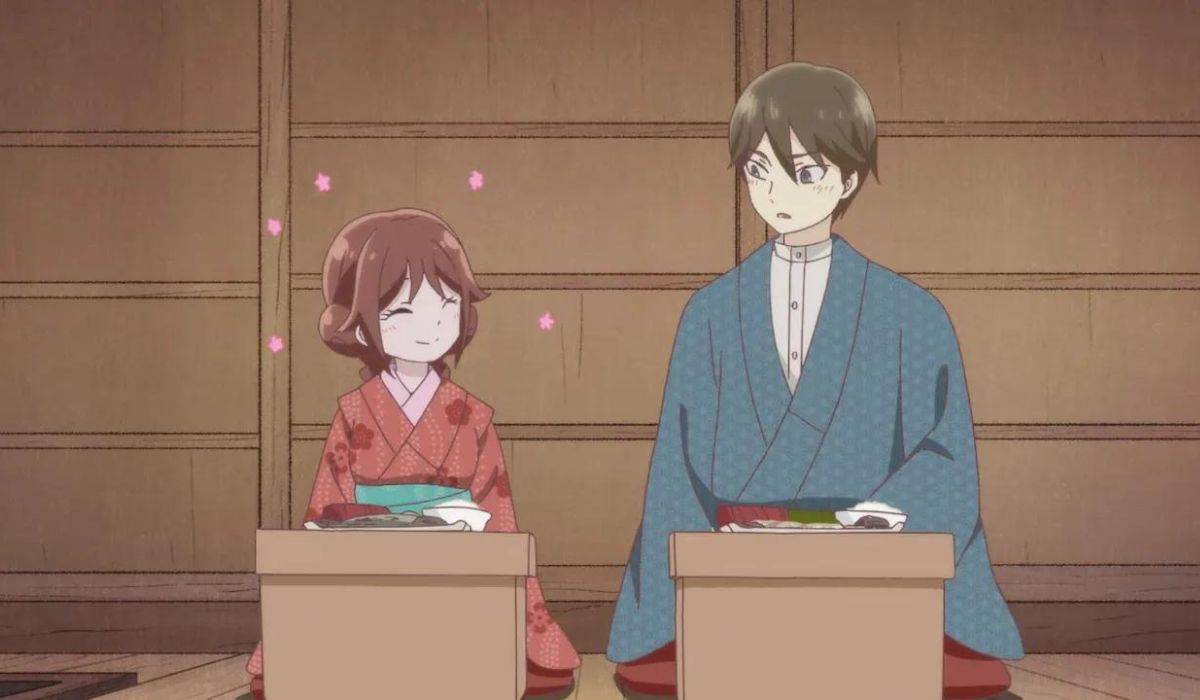
Alongside its lovingly recreated visuals, ‘Taisho Otome Fairy Tale’ also succeeded in capturing the whimsical spirit and societal changes of its setting. Yōko’s adventures with magic allowed the show to comment on topics like modernization, Westernization, and women’s changing roles through a fairytale lens. Episodes explored themes like tradition versus progress, science versus spirituality, and women’s education.
Meanwhile, Yōko herself developed from a curious village girl to a brave adventurer comfortable in both traditional rural and booming urban cultures. The mask prince and magical elements kept the tone lighthearted yet thoughtful.
Character dynamics also enhanced the experience, like Yōko’s caring family of Tōru and her friends. Tōru, in particular, was a fascinating enigma – a loyal ally to Yōko but privately guarding much intrigue and past secrets beneath his gentlemanly facade.
The Masked Prince offered an air of romance and mystery as an important recurring figure in Yōko’s life. Secondary characters brought the village community to life, whether comedic figures or those undergoing their own arcs. Even villains had believable motivations beyond pure evil, reflecting the sociopolitical concerns of the era.
16. TONIKAWA: Over The Moon For You
The romantic comedy genre is saturated with countless lighthearted anime about budding young love and relationship hijinks. However, one series subverted expectations by taking its central couple’s romance far more seriously than anticipated – ‘Tonikaku Kawaii,’ also referred to by its English title ‘Fly Me to the Moon.’
Produced by Seven Arcs and airing its single course season in 2020, ‘Tonikaku Kawaii charmed audiences with its refreshingly mature take on romance that balanced hilarity with genuine warmth.
The show centered around Nasa Yuzaki, an ordinary high school boy who saves the life of a mysterious, beautiful girl named Tsukasa. As thanks for his heroic deed, Tsukasa unexpectedly proposes to Nasa on the spot.
To his complete shock and confusion, Nasa accepts not knowing anything about this stranger. They soon move in together as a married couple, with Tsukasa remaining aloof about her strange circumstances and mysterious past. Nasa commits himself to understanding his new wife better while trying to balance homework, married life, and dealing with Tsukasa’s eccentric antics.
What stood out most was how ‘Tonikaku Kawaii’ took its central couple’s marriage genuinely seriously from the very start, treating it with care, respect, and depth rarely seen in the rom-com genre. Despite comedy hijinks, Nasa and Tsukasa skillfully balanced building emotional intimacy through everyday moments together like cooking, cleaning, or conversations.
Their bond evolved organically through sincerely listening to each other rather than meaningless squabbles. While other shows dragged out will-they-won’t-they tension, Nasa and Tsukasa’s comfortable dynamic fast-tracked realistic relationship growth.
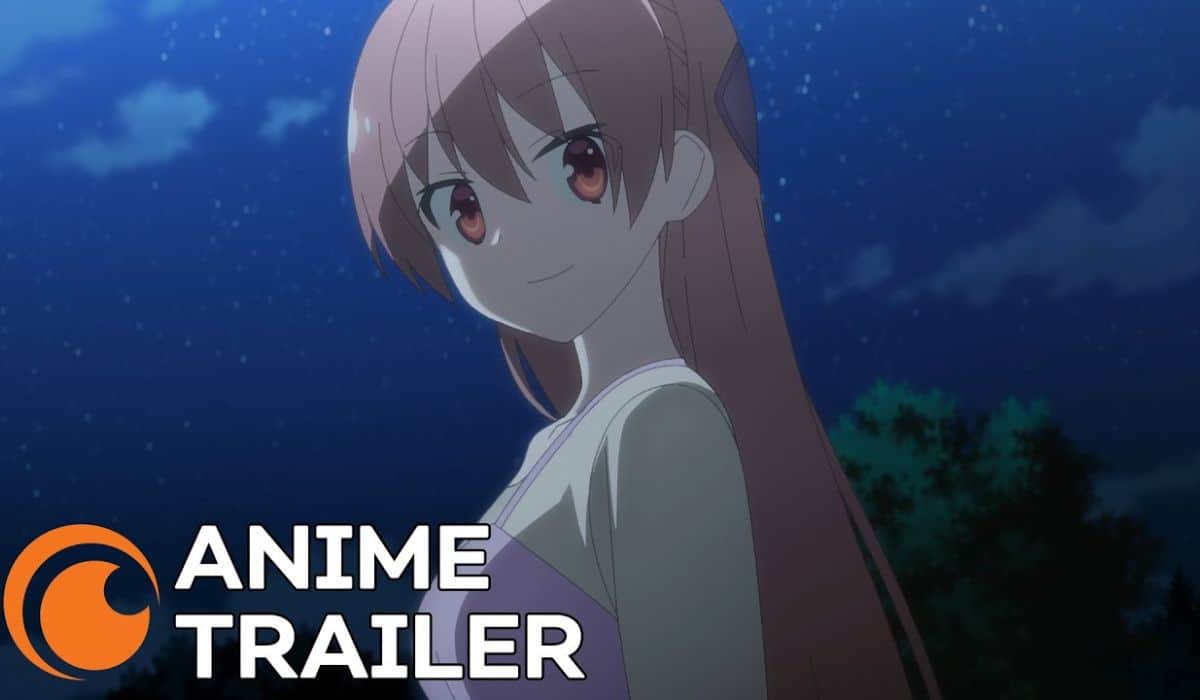
Animation also enhanced their heartwarming romance through subtle details. Lingering adoring gazes, gentle, comforting touches, and how they finished each other’s thoughts expressed deep understanding between them.
Smooth, fluid character motions captured emotional comfort just as much as comedic flair. Prominent background music cues amplified intimate pillow talk scenes to feel all the richer. Even mundane moments like holding hands and walking home emitted pure marital affection. Of course, plenty of hilarious hijinks still emerged from Tsukasa’s peculiar quirks and supernatural abilities unknown to Nasa.
Whether she was popping into his bath unannounced or effortlessly defeating martial artists, her curiously anachronistic behavior and inhuman reflexes raised comedic confusion. Meanwhile, Tsukasa found plenty of amusing ways to tease and fluster her ever-patient husband. Their scenarios poked fun at cliches through unpredictable circumstances.
15. City Hunter Series (2011)
Ryo Saeba will not leave any lady alone. He can charm anybody into subjection, friend, or foe. This hired shooter only works with the sexiest women.
After all, the most prestigious women demand nothing less than the most skilled gunslinger to deal with their perilous predicaments. Who, then, safeguards the females from Ryo? Kaori, his companion, and her enormous hammer.
When I first started reading some articles, I found a piece on the City Hunter spinoff Angel Heart, noting how, after a serious first 13 episodes, the show abruptly switched to an episodic format with a concentration on goofs and gaffs. That seemed strange to me.
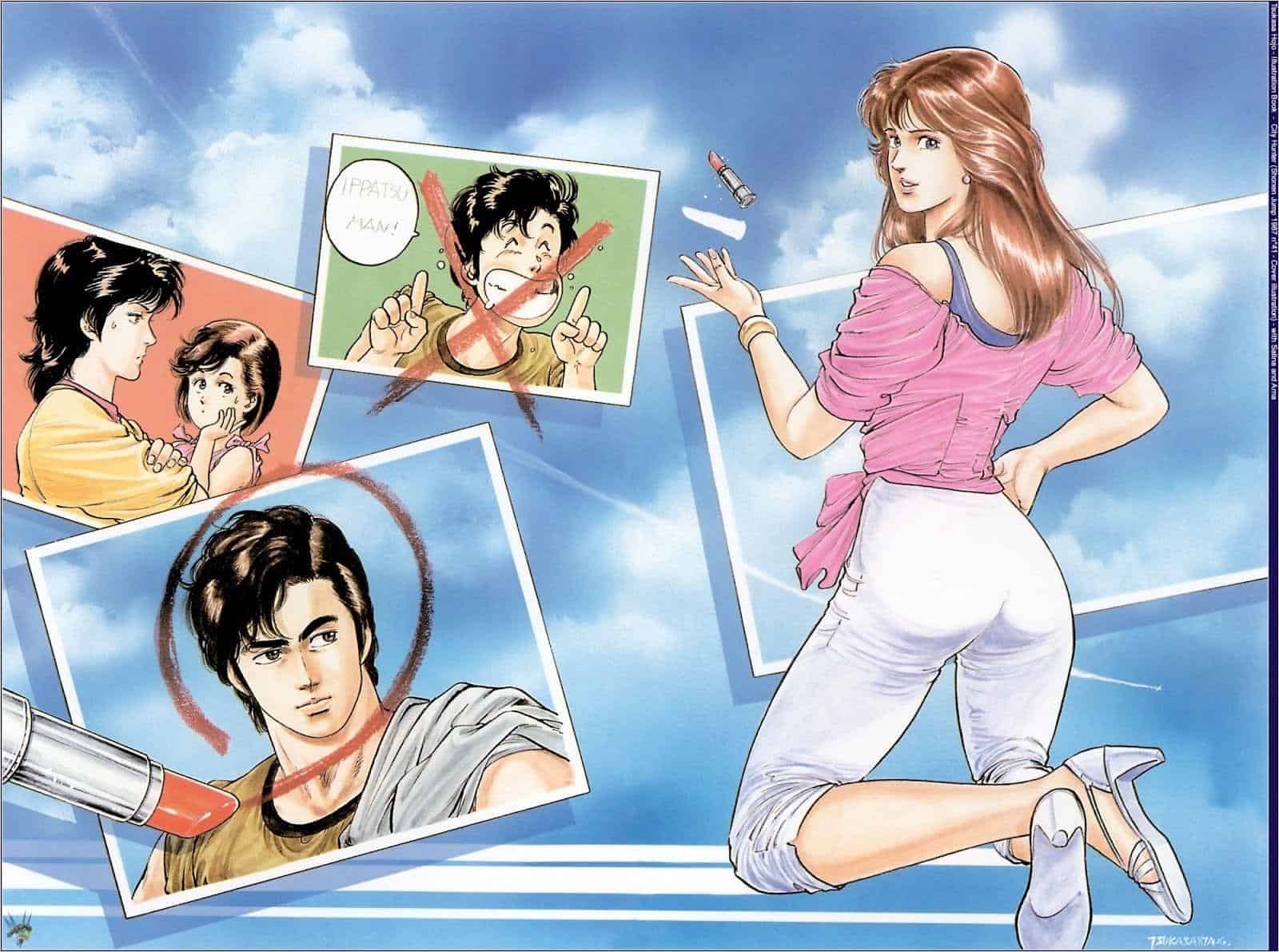
Now that I’ve finished City Hunter, I can see why Angel Heart changed gears and adopted the same tone as the first series.
Ryo takes on a new client every episode or two, and she’s always a woman whose life is in danger. Gunfights and explosions abound as the protagonist moves from each forthcoming situation, solving problems for people and eliminating criminals.
In one role, he plays the manager of his favorite actress, whose life is in danger on set. He continues shouting “Cut!” every time her co-star moves near for a kiss or a passionate moment.
When the director finally has enough, he lets the camera keep rolling and includes Ryo’s shenanigans in the action sequences. My heart leaps at the thought.
The character of Ryo is fantastic. His presence is essential to the show’s success. He is a very skilled marksman. He shoots insanely well, sometimes even down the barrel of a villain’s gun or repeatedly at the same distant target. The humor makes up for the fact that you must maintain your disbelief. His struggle continued throughout the season.
14. Black Clover (2017)
Asta is a kid who was born into a world where magic is central and where everyone has at least a rudimentary facility with it. His ambition to become the Wizard King persists despite this enormous obstacle and the frequent mockery he faces.
He overcomes the rigors of apprenticeship and the lack of the term “quit” in his language to rise through the ranks of the Magic Crusaders and wield anti-magic swords to save the country on several occasions.
Black Clover, despite a few early issues, had me on the edges of my seat for the whole of the series. What a fantastic show. It’s so fantastic that it may even be superior to the series it parodies. It’s heartening to see how much the Black Bulls have developed as individuals and as a unit.
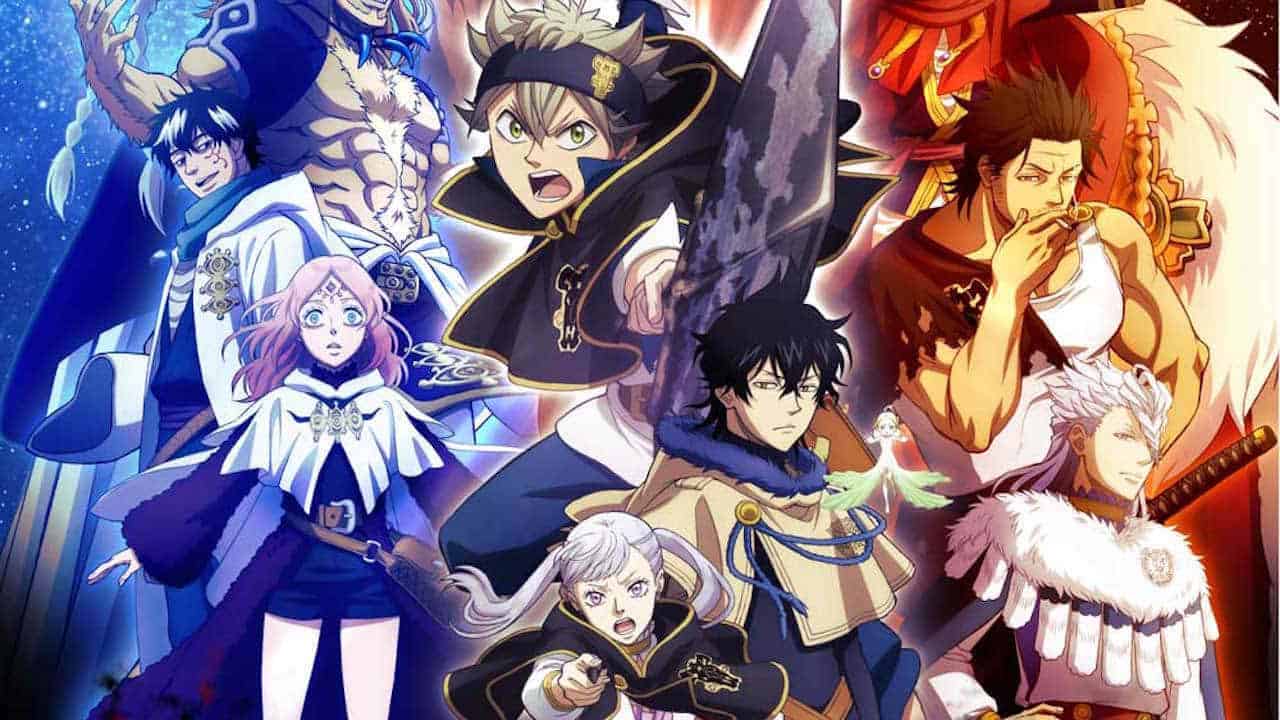
Characters’ dogged determination is unparalleled, both central and ancillary. If you give Black Clover a chance and stick with it through the hard patches, it will quickly become one of your favorites. The comedy is fantastic, and the fast-paced sequences never disappoint. The timing and delivery of every joke is spot-on.
Also, keep in mind that inequality is a prominent plot point throughout the series. Different social classes may be found in Black Clover, from aristocrats to peasants. Your natural magical ability increases as you go through the courses. Also, by a significant margin.
This is why aristocrats and nobility consider the common people to be beneath them and punish them accordingly. Asta and Yuno’s goal in becoming the Wizard King is to abolish social stratification altogether. Both Lemiel Silvamillion, the previous Magician King, and Julius Novachrono, the most recent Wizard King, share this desire.
13. Demon Slayer (2019)
In the anime series Demon Slayer: Kimetsu No Yaiba, the protagonist, Tanjiro Kamado, learns that his family has been slain and that the sole survivor, his sister Nezuko, has been turned into a demon. Unlike other demons, Nezuko proves she can rein in her bloodthirstiness and live happily with humans.
Tanjiro, followed by his sister, seeks to find a way to restore his human form to his whole family. As far as anime protagonists go, Tanjiro fits the mold perfectly.
It’s heartening to see how upbeat and positive he can be despite his dark past. Tanjiro has every reason to be a morose, silent type after what he’s been through, but instead, he chooses to smile in the face of his adversity.
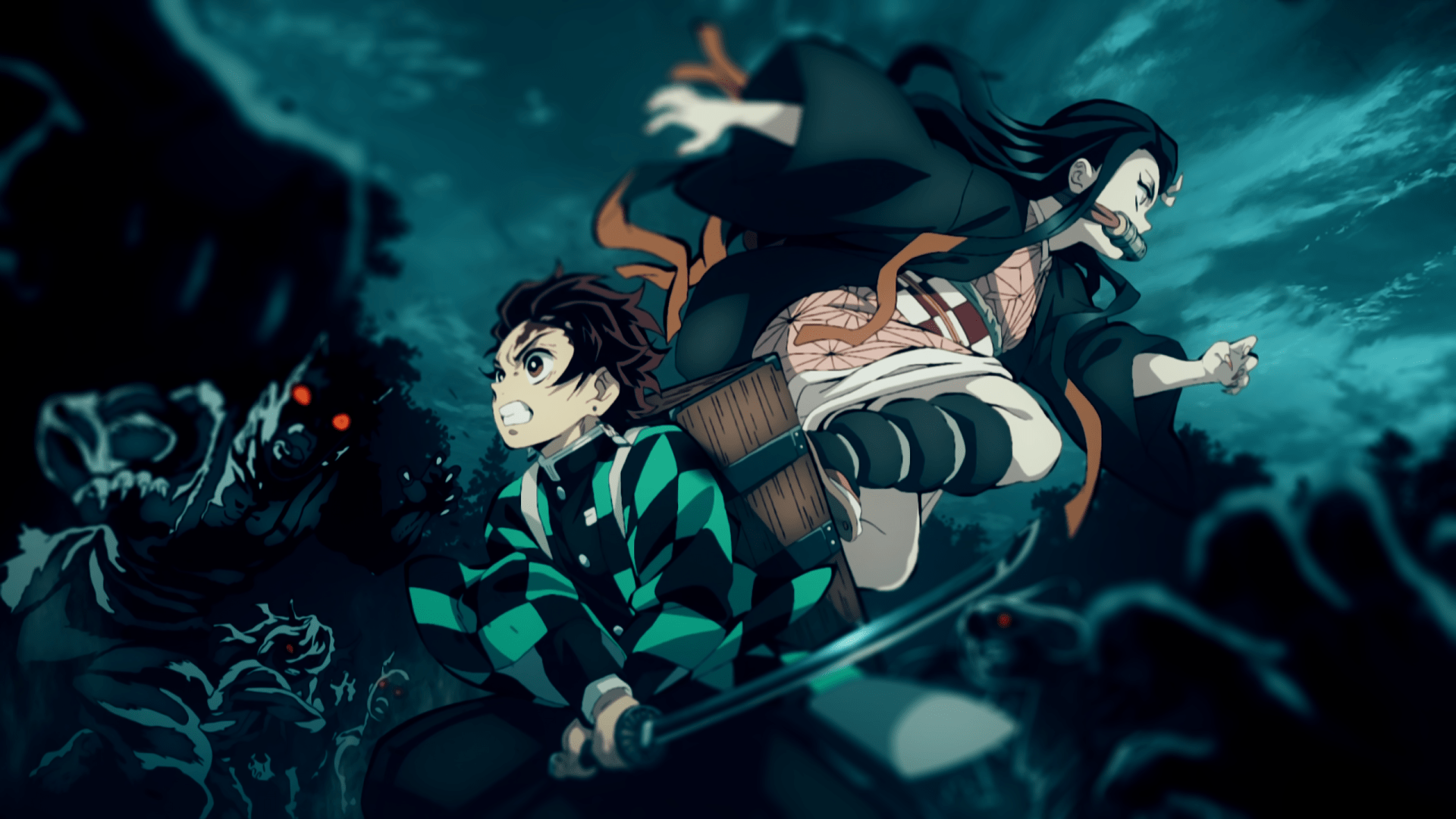
His morals and integrity are rock solid, and it’s almost hard to want to cheer for him. And then there’s Nezuko, who has an abundance of naiveté but also a strong desire to protect those she perceives to be family. But as befits a demon, her seeming innocence may quickly give way to brutality when called upon.
On the surface, this interaction seems funny; nonetheless, it ultimately highlights the terrible aspects of her demonic possessions and character. Every human and monster in Monster Slayer has a tragic backstory.
The show does an excellent job of depicting the demons as vicious and murderous antagonists who retain some human qualities. The demons aren’t just generic killing machines thrown at Tanjiro for the sake of excitement; they each have their own unique backstories and goals.
12. Maid Sama!
Maid Sama! is one of my favorite anime series of all time. I first stumbled across it years ago while browsing anime sites online, and the title and premise immediately caught my interest.
The story follows Misaki Ayuzawa, the strict student council president of a formerly all-boys high school that has recently started admitting female students. To help provide for her family, Misaki works a part-time job as a maid at a maid cafe after school – but of course, she has to keep this a secret from the school to maintain her reputation and authority as student council president.
The series starts off with the school’s most popular boy, Usui Takumi, discovering Misaki’s secret part-time job. At first, you’d expect him to use this knowledge against her, but surprisingly, he becomes intrigued by her dedication to working hard for her family despite her reputation at school. A really fun rivalry and eventual romance develop between these two opposite personalities.
One of the things I love most about Maid Sama! is how it turns a bunch of shojo romance cliches on their head. Misaki is constantly proclaiming how much she hates men and doesn’t need romance – but despite her outward disdain, we get to see the moments when Usui’s kindness cracks through her tough exterior.
Their relationship progresses naturally from constant bickering to mutual understanding and attraction. It feels so much more meaningful than a typical naive shojo heroine instantly falling for a hot guy.
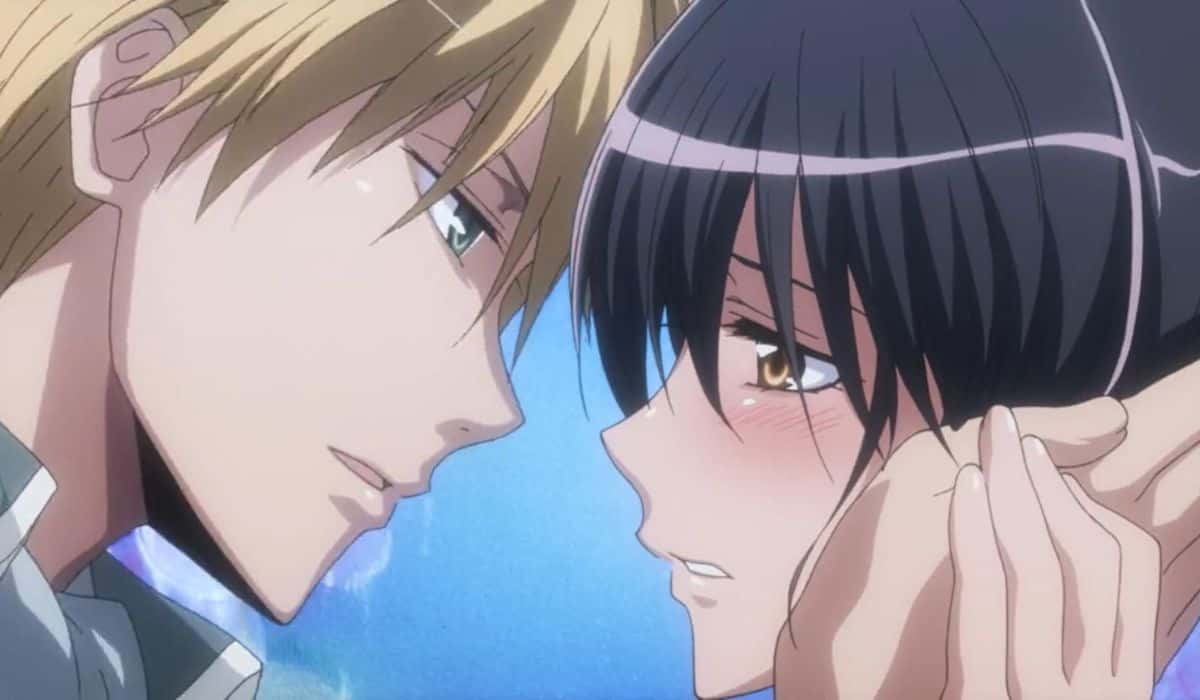
Misaki is such a great female lead – she’s hardworking, smart, athletic, and responsible – basically amazing at everything except being honest with her own feelings. It’s so satisfying seeing her open up and slowly let go of the burden of responsibility she’s carried all her life as she gets closer to Usui. He teaches her that it’s okay to rely on others sometimes.
And Usui is just the perfect romantic lead. He’s handsome, intelligent, kind, competent at everything (including cooking and cleaning!), and endlessly patient and forgiving with Misaki.
He’s basically perfect boyfriend material, but in a way that still feels believable for his character. Unlike a lot of shojo leads, he communicates clearly and directly with Misaki about his feelings for her, which helps push their relationship forward.
11. Spice and Wolf
Spice and Wolf has become one of my favorite anime series of all time. At first glance, the premise seems a bit unusual – the story follows a traveling merchant named Kraft Lawrence who encounters a pagan wolf deity named Holo.
She appears in the form of a young girl with wolf ears and a tail and strikes a deal with Lawrence to join him as he peddles goods from town to town in exchange for eventually helping her return to her snowy northern homeland.
Despite the unconventional supernatural premise, Spice and Wolf turns out to be a surprisingly down-to-earth and engrossing story of trade, economics, relationship building, and pursuing dreams. What immediately drew me into the series is the sharp wit and verbal sparring between Lawrence and Holo.
They have such great banter and comedic timing that really brings their odd couple relationship to life. Holo loves to tease Lawrence and mess with him, like switching his wheat with rocks as a prank. And Lawrence takes on the straight-man role, often exasperated but patient with Holo’s impish nature.
Their interactions feel fresh and fun – Holo speaks very formally and intellectually as a centuries-old deity, which contrasts nicely with Lawrence’s more casual and modern speech.
The voice actors did such a phenomenal job at delivering the fast-paced dialogue. Another aspect I love is how Spice and Wolf portray economics and trade in such an engaging way.
The show manages to make concepts like arbitrage, leverage, and currency speculation genuinely compelling! I never thought the intricacies of business transactions could make me feel suspense, joy, and heartbreak like this series does.

As Lawrence travels between towns and cities, we get to see how supply, demand, and other factors impact the prices he can get for his goods. He has to balance risks vs. rewards, when to take a deal vs. holding out for more profit, etc. And Holo’s keen wisdom and business instincts from centuries of observing human merchant behavior provide invaluable guidance.
An element that really elevates the series is the evolving relationship between Lawrence and Holo. They start off wary of business partners but slowly build trust and understanding of each other over their travels together.
Holo longs for the simpler rural life she used to know, while Lawrence seeks economic success so he can eventually build his own shop and leave the traveling merchant life.
10. Bibliophile Princess
Bibliophile Princess is the latest anime based on a light novel series that I’ve absolutely fallen in love with. As an avid reader and bookworm myself, I was instantly drawn in by the concept of a book-loving princess who prefers the company of books over people.
The story follows Princess Elisabeth as she is set to be married off in a political marriage for the benefit of her kingdom. But Elisabeth would much rather curl up in the royal library with a good book than socialize at balls and deal with potential suitors.
When she hears a rumor about a cursed book within her family’s underground rare book collection, her sense of adventure is sparked. Elisabeth sneaks into the rare book collection and ends up bonding with and awakening the demon guardian of the books, Teacher.
He appears in the form of a tall, handsome man with glasses and agrees to help her find the cursed text. But they also quickly discover that books in the collection have started to go missing or become damaged.
What I love about Bibliophile Princess is seeing Elisabeth’s growth from a shy, isolated bookworm to an active protagonist determined to protect the books she loves. With the Teacher’s help, she gains confidence and starts to see the value in building connections with others beyond the pages of a novel.
The budding relationship between Elisabeth and Teacher is also really endearing. There’s a slow-burn romance as the demon who distrusted humans starts to open up the more time he spends with the kind-hearted Elisabeth. Their witty banter and discussions about books draw them closer together.
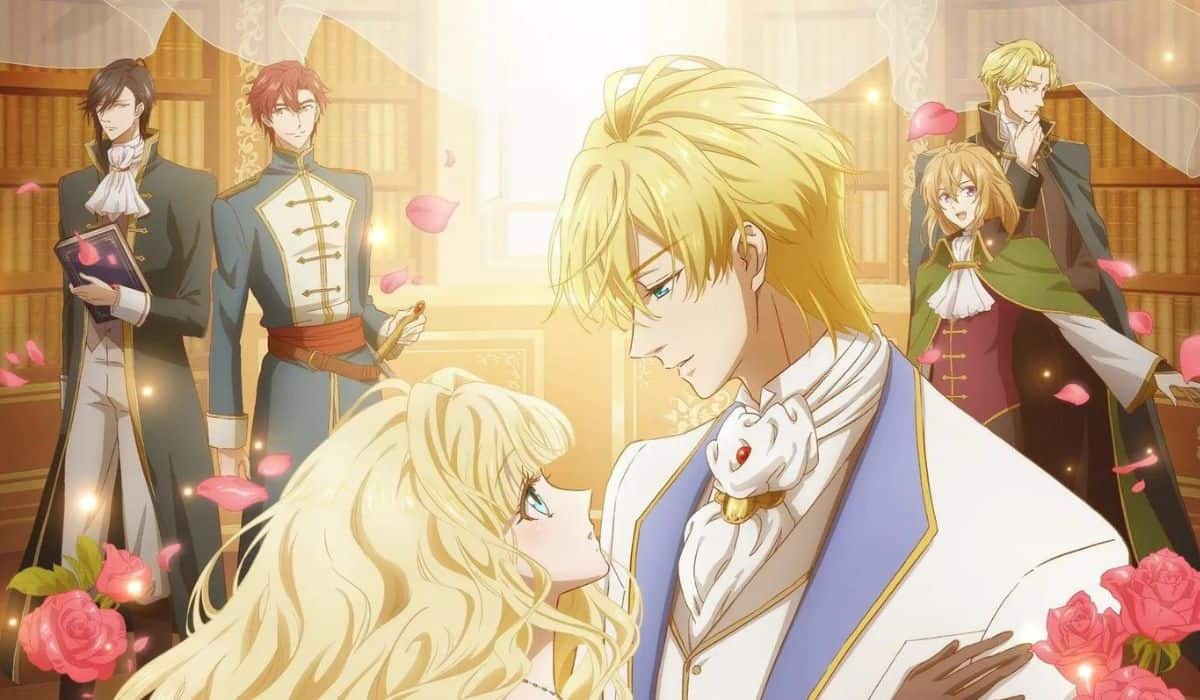
The gorgeous gothic library setting is a book lover’s dream come true. The anime does a wonderful job depicting the grandeur of the literary collection, from the maze-like shelves to the ornate decor. You can really feel Elisabeth’s passion and comfort within the library.
In between the main overarching story, each episode also spotlights various fictional books that Elisabeth and Teacher interact with, bringing the stories to life through vivid animation sequences.
It’s always a joy seeing Elisabeth’s imagination come to life on screen. Some stories are whimsical fairytales, while others are thrilling adventures – the variety keeps things interesting.
I also love how seamlessly the show incorporates literary references, quotes, and wisdom into its script. Elisabeth and Teacher’s conversational book discussions are a treat for any bibliophile to watch.
The writers clearly had just as much fun paying homage to books as the original light novel author. The steampunk-inspired setting provides such an immersive atmosphere.
The clothing, architecture, and technology have a Victorian vibe with fantastical elements woven in. Visually, the anime is just gorgeous, with intricate details that bring the world to life.
9. The Seven Deadly Sins (2014)
The Seven Deadly Sins, the queen of the Empire of Liones, Elizabeth, is on the hunt to capture the Holy Knights, an organization that was disbanded after the destruction of the country.
She recruits Meliodas, chief of the Seven Deadly Sins, and Hawk, head of the order of scraps disposal, to help her gather the group known as the Seven Deadly Sins and recapture the world occupied by the Holy Knights.
The story revolves around a holy war, and each episode features a climactic showdown between our unlikeliest heroes and their most formidable adversaries. This anime has a quick pace.
There aren’t endless periods of grinding combat that leave viewers hanging and give the impression that nothing significant happened in the story.
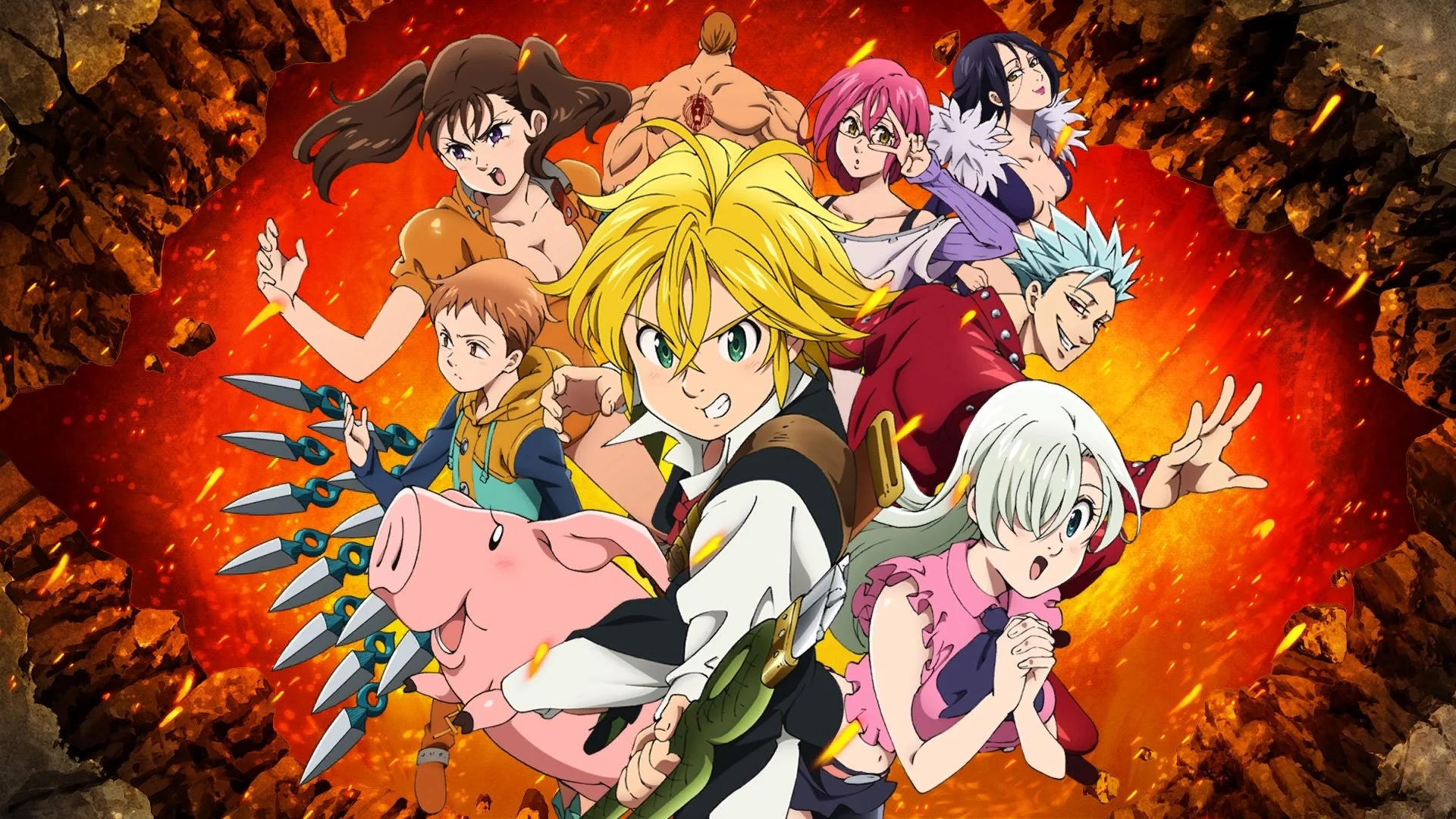
As you would expect from a group of criminals named after the seven deadly sins, every single one of the Seven Deadly Sins is hotheaded and eager for battle. The show’s gloominess is an illusion.
There is a talkative pig as a companion, and the graphic style is really childlike. Towards the first appearance, it would seem that the program is aimed towards a younger demographic.
The blood, though, is plenty, and the villains are merciless. There is no ethics among the holy knights. Infused with demonic energy, they relentlessly seek out the seven deadly sins in an effort to not only acquire them but eliminate them from existence.
Many innocent people will be killed as a result of their endeavors. Our heroes aren’t without their flaws, though. Each character’s sin that gives rise to their defining trait of wrath, jealousy, laziness, and greed is gradually revealed to the audience over the course of the season.
This manga adaptation clearly intended to reach a certain point in the original story, and it did all in its power to do it. While this strategy often yields dubious results, it served its purpose here.
8. Hunter X Hunter (2011)
Gon Freecs, a 12-year-old prodigy, wants just one thing in life: to complete his duties as a Hunter and reunite with his father, Ging Freecs, who left him when he was a child.
Gon had often pondered what exactly it was about Hunters that caused Ging to neglect his parental duties for them. Gon, despite his youth, is very focused and motivated to complete this mission. Like Naruto, he has a unique charisma that grabs and motivates everyone he encounters.
Hunter x Hunter is an interesting premise, at least at first glance. We’re led to believe that this will be an exciting journey in the vein of One Piece, where the main characters usually have a blast despite their dreadful predicament. At least, that’s how it seems at first.
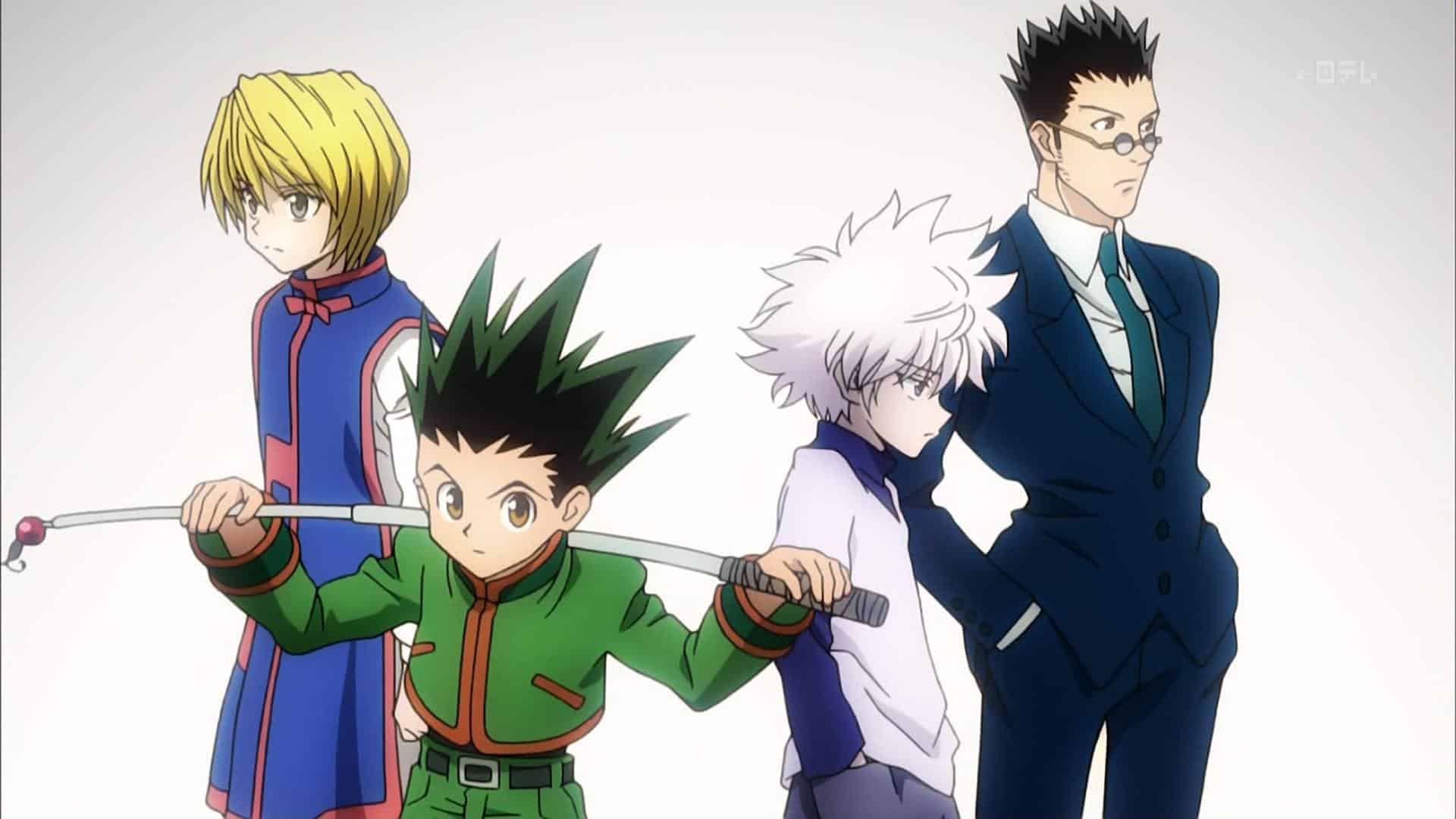
We are thrown headfirst into this carefree setting filled with people who are, on the whole, rather young, and we get to observe as they triumph over a variety of obstacles.
The show goes from being humorous to quite disturbing. It doesn’t gloss over the fact that people die. And in most cases, a lot of people will perish. Gon encounters Killua Zoldyck, his partner, best friend, and fellow 12-year-old genius.
He comes from a long line of deadly killers who want to remain anonymous. Killua has chosen to become a Hunter, against his family’s wishes, rather than carry on his parent’s business. The anime has many plot arcs. The first arc is the Hunter Evaluation.
In the second Phantom Troupe, Gon and Killua learn the results of the Hunter exam’s last component, and something isn’t released until after the evaluation has been taken. They research Nen and devise methods for utilizing it in battle. This may be compared thematically to the Naruto Chakra system.
7. JoJo’s Bizarre Adventure (2012)
JoJo’s Bizarre Adventure is an anime series written by Hirohiko Araki that has been running continuously since 1987. There have been eight installments thus far, each focusing on a different aspect of the plot or taking place in a different realm.
It’s a high-octane show that constantly slams you with crazy antics and good times. The names of all the characters are taken from the names of musicians, song titles, or food items.
The name of the lead character, “JoJo,” comes from the title of a song by the Beetles called “Get Back.” Names that are both memorable and innovative may be produced using this method, as can the comfortable fuzzies of nostalgia. An orphan named Dio Brando finds refuge with the wealthy and influential Jonathan Joestar in 1880s Britain.
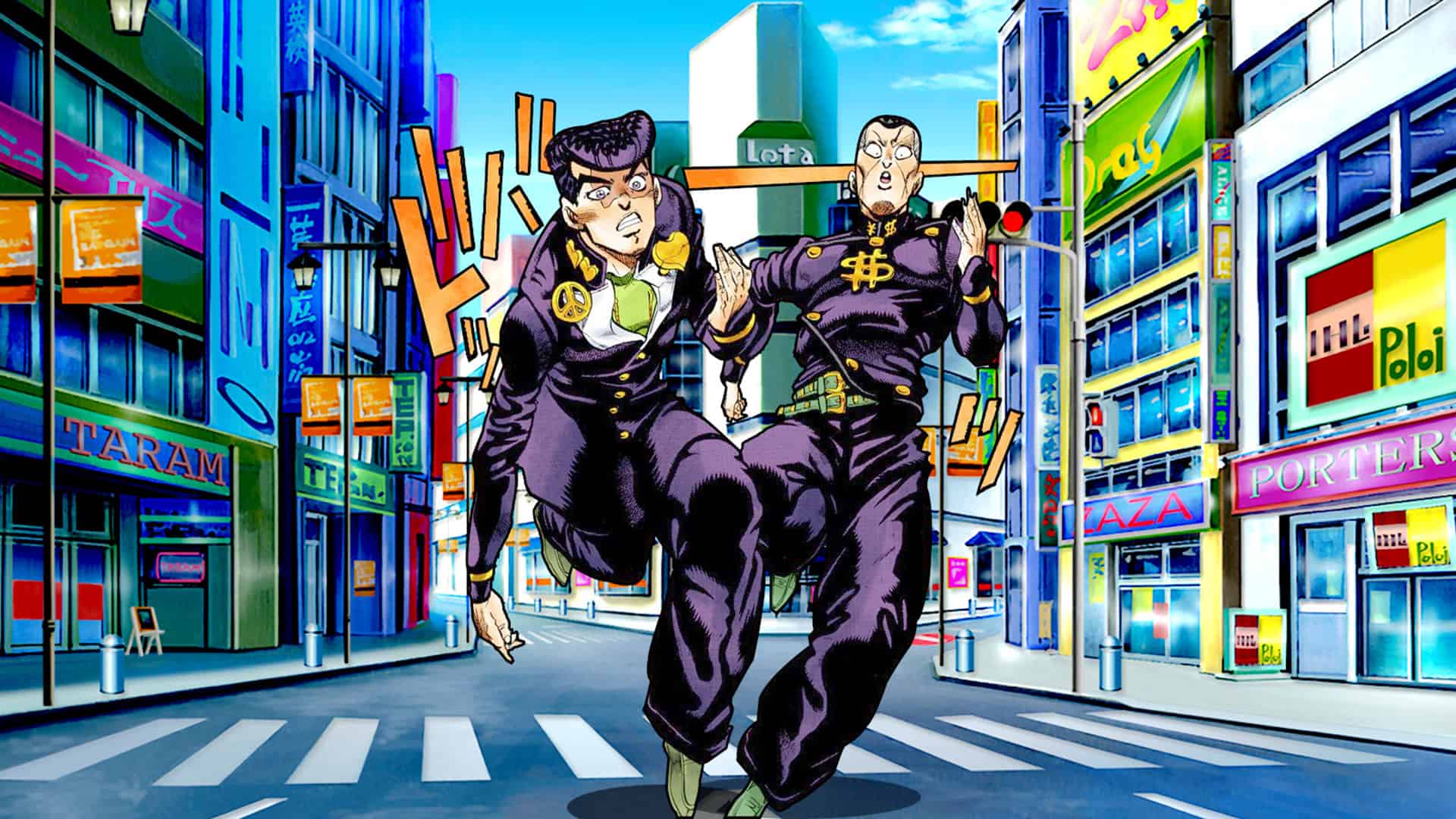
Their relationship had a difficult start. When Brando kicks Jonathan’s dog, the whole group of youngsters turns on him. Jonathan, ever the gentleman, attempts to cool things down and ends up befriending Dio as an adult. Jonathan is well aware that his stepbrother is an inhumane being who passionately covets his belongings.
When Dio’s first plan to take over the Joestar family fails, he switches tactics. Dio turns into a monster by donning an ancient mask with magical powers that the father he adopted was studying.
With the facts in hand, Jonathan has no choice but to go the same way as his new guide, Will Zeppli. Phantom Blood’s storyline has officially begun.
JoJo’s Bizarre Adventure’s first few episodes are interesting. The series is marketed as weird but is really a horror drama at heart. Even before Dio is transformed into a vampire, Jonathan’s rivalry with him is terrible.
I was beginning to wonder what could possibly surpass the supposedly fiery denouement at the final moment of the third episode. With the introduction of Will Zeppli and the notion of Hamon in the fourth episode, the program finally finds its feet.
6. Kamisama Kiss
Where are my shoujo romance fans? Get ready for me to gush about Kamisama Kiss, an absolutely adorable supernatural love story that deserves more hype! This anime has everything – comedy, drama, great characters, and a romantic pairing that hits all the right notes.
Kamisama Kiss follows high school girl Nanami, who becomes a deity after a man gives her his shrine. She has to take over his responsibilities of listening to people’s prayers and giving advice. Oh, and the shrine comes with a grumpy familiar named Tomoe, who at first hates serving a human girl as his new master.
But of course, he starts to warm up to her over time as they help various supernatural beings who visit the shrine with their problems. And despite their bickering, Nanami and Tomoe soon find they were made for each other.
Their relationship is just too cute! The anime has some great comedic moments, especially with Nanami adjusting to her new supernatural life. She’s very much a normal teen, so seeing her take on deity training makes for good laughs. Tomoe plays the straight man and is constantly annoyed by his new mistress’ hijinks. Their banter is so entertaining!
But Kamisama Kiss also tugged at my heartstrings a lot. Nanami’s backstory of being abandoned by her parents and having to work to survive is sad. You can’t help rooting for this strong, kind girl who keeps pressing forward despite loneliness.
Seeing her find a new family in Tomoe and the people at the shrine is touching. The romance progresses naturally, too – Tomoe starts cold, but you slowly see his walls come down.
Their intimacy grows by supporting each other through hardships. And the way Tomoe becomes so caring and protective of Nanami is just beautiful character growth. Their intimate moments had me smiling like an idiot!
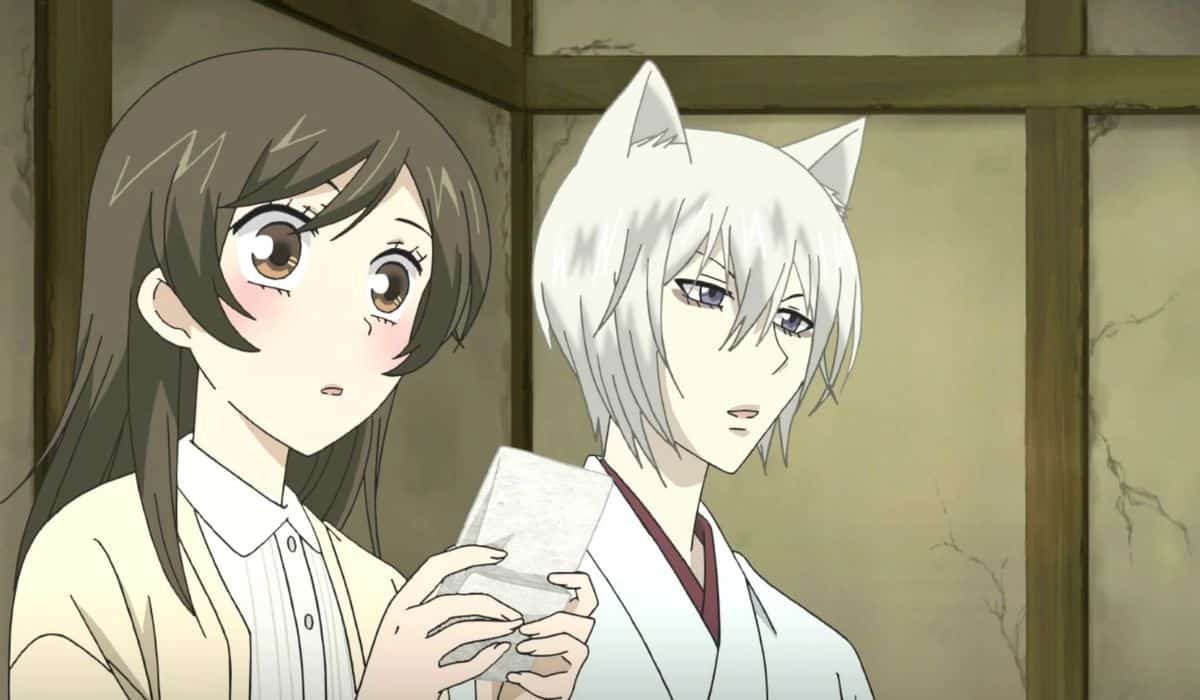
Kamisama Kiss explores a lot of meaningful themes like finding family, believing in oneself, and learning to trust again after loss. Nanami and Tomoe both help heal what’s missing in each other. The blend of humor and drama was very balanced.
I also have to praise the amazing animation style! The supernatural elements like spirits and magic were brought to life gorgeously. The pastel color palette is so pleasing and lets the characters’ emotions shine through. You can feel the passion the animators put into this.
And I can’t forget the exhilarating soundtrack! The musically talented cast sings energetic opening and ending songs that capture the spirit of the show. The instrumental background music heightened both the lighthearted and serious moments.
Kamisama Kiss is a must-see for shoujo fans but also anyone who loves supernatural romance. It has the perfect recipe – lovable characters, comedy and drama, heartwarming themes, and relationships that pull you in. The story left me fully satisfied, too, with a conclusive ending.
5. The Angel Next Door Spoils Me Rotten
The Angel Next Door Spoils Me Rotten is a Japanese anime based on the light novel series of the same name written by Saekisan. The anime adaptation premiered in January 2022 and has quickly become a fan favorite for its comedic moments paired with heartfelt life lessons.
The story follows high school student Amane Mahiru, who lives next door to a young girl named Amane Yua. Despite her very young appearance, Yua is actually an angel in training sent down to Earth to learn how to guide and assist humans.
Due to a slip-up, Yua ends up contracting with Mahiru to be his guardian angel. From that point on, she vows to spoil and dote on him as her master. Aside from the two main characters of Mahiru and Yua, the anime also introduces their friends and classmates.
There’s Mahiru’s best friend, Tachibana Kyoichi, their upperclassman Sasaki Lilith, and Yua’s angelic mentor, Kuroha. Each character contributes their own brand of humor and perspective to this funny yet feel-good anime.
A major draw of The Angel Next Door lies in its balance between laugh-out-loud comedy and thoughtful life lessons. Yua’s childlike innocence, paired with her immense angelic powers, leads to many hilarious mishaps.
For instance, when she tries to heal Mahiru’s scraped knee, she ends up boosting his physical abilities to superhuman levels temporarily. This results in Mahiru accidentally destroying the school’s tennis court, thanks to his enhanced strength.
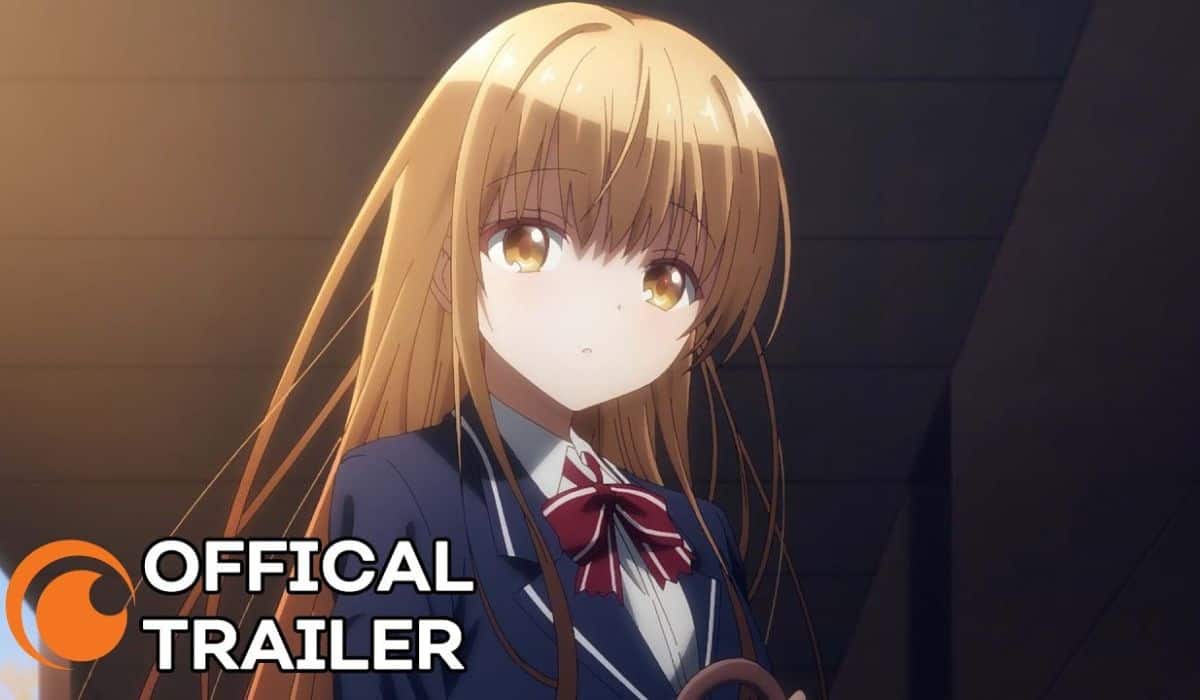
At the same time, Yua’s inexperience as an angel-in-training often requires Mahiru’s guidance. Through their time together, he teaches her important lessons about being human, such as learning empathy, patience, and understanding emotions. In turn, Yua’s optimistic approach to even mundane daily experiences helps Mahiru appreciate life’s small joys.
While the anime offers funny gags and comedic fantasy action, it’s also filled with heartwarming slice-of-life scenes.
We get to see Mahiru and Yua’s daily school life, interactions with friends, and small precious moments like walking home together while chatting. These mundane yet endearing scenes are elevated by the chemistry between the two leads.
4. Horimiya
Horimiya is a Japanese anime based on the manga series by HERO and Daisuke Hagiwara. It premiered in January 2021 and quickly became a hit for its down-to-earth portrayal of teen romance and refreshing take on high school life.
The story follows Miyamura Izumi, an ordinary and unassuming high school student. At school, he wears glasses and keeps to himself. But unbeknownst to his classmates, Miyamura hides another side of himself outside of school, where he has multiple piercings and tattoos.
One day, Miyamura’s popular classmate, Hori Kyoko, meets Miyamura outside of school. To his surprise, she is very different from her perfect class president image, dressing casually and displaying a rowdy personality.
From this fateful encounter, Miyamura and Hori slowly become friends and learn more about each other’s hidden sides. Aside from the two leads, Horimiya also features a cast of lovable supporting characters. There’s Tooru Ishikawa, Hori’s protective little brother, and Sengoku Kouichi, Miyamura’s guy best friend.
Fans also love female side characters like Yuki Yoshikawa, Hori, and Miyamura’s airheaded friend who provides comic relief. Each character adds warmth and humor to this relatable high school story. What makes Horimiya stand out is its true-to-life depiction of high school experiences.
Small moments like Miyamura and Hori awkwardly exchanging contact info or meeting each other’s friends ring very true. Horimiya understands the little details of how youthful relationships gradually develop through everyday interactions.
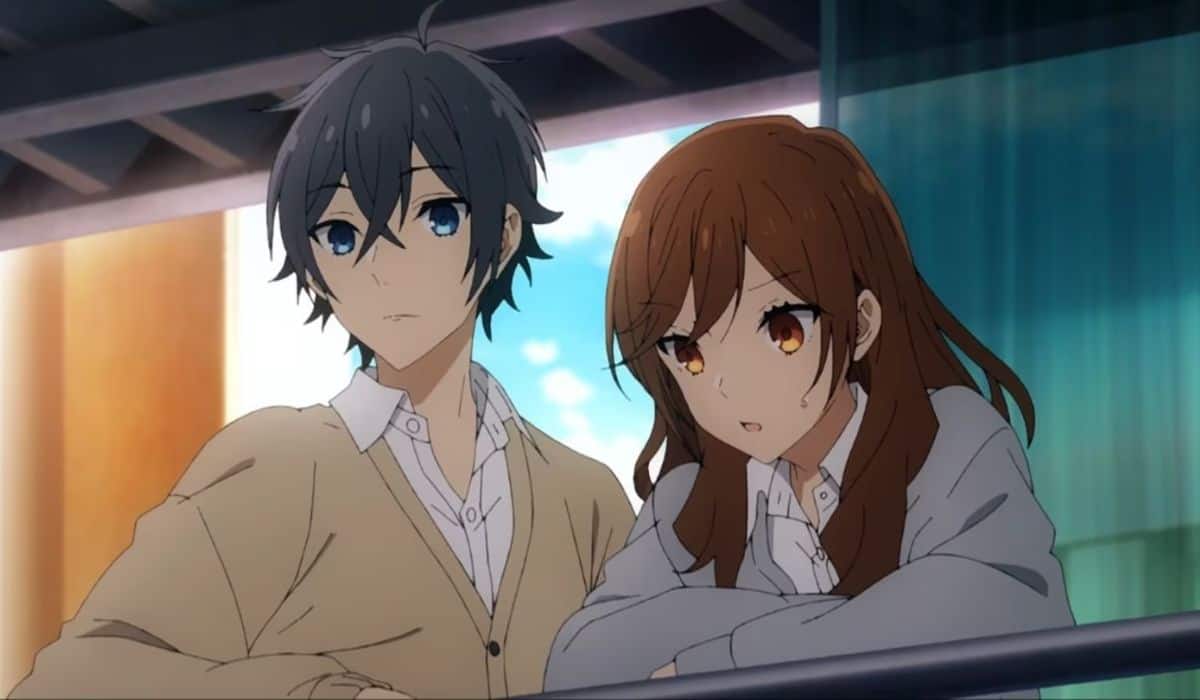
The anime also deftly balances comedy with sensitive issues teenagers face. For example, it touchingly explores how Hori shoulders the responsibility of caring for her younger brother due to her working parents.
On the other hand, Sengoku’s flashy playboy antics provide some over-the-top hilarity. By blending humor with insight, Horimiya makes its coming-of-age story very accessible. At the heart of Horimiya’s appeal are its two endearing protagonists.
Miyamura’s subtle metamorphosis from a stiff loner to Hori’s reliable confidante makes him very sympathetic. Meanwhile, Hori’s lively personality hides her problems juggling school and family life. Together, they find solace and support in each other’s friendship.
Miyamura and Hori’s natural chemistry also makes their budding relationship believable and sweet. There are no huge dramatic confessions but rather mutual understanding built on everyday interactions.
Whether it’s walking home together or chatting over ice cream, their romantic development feels organic. Aside from its down-to-earth romance, Horimiya also crafts thoughtful character arcs surrounding Miyamura and Hori’s personal struggles.
Hori learns to rely more on her friends instead of always placing the burden on herself. On his end, Miyamura overcomes his social anxiety and makes deeper connections beyond just Hori.
3. Gintama (2006)
Gintama is one of the few epic anime where the main character is not a naive young man who is just in it for the jokes. Instead, it’s an epic in which a naive hero represents the pinnacle of slapstick comedy.
The first part of the story was an introductory arc, but despite that, it had engaging characters, humorous banter, thrilling action, and many more qualities that may keep you entertained for hours.
We get several indications and a solid base to build on throughout the setup arc. After the initial setup, the story’s actual development starts to unfold.
The manga deepens our understanding of the characters and introduces many new ones. Overall, the plot has more going on, the arcs are longer, and the battles are more exciting.
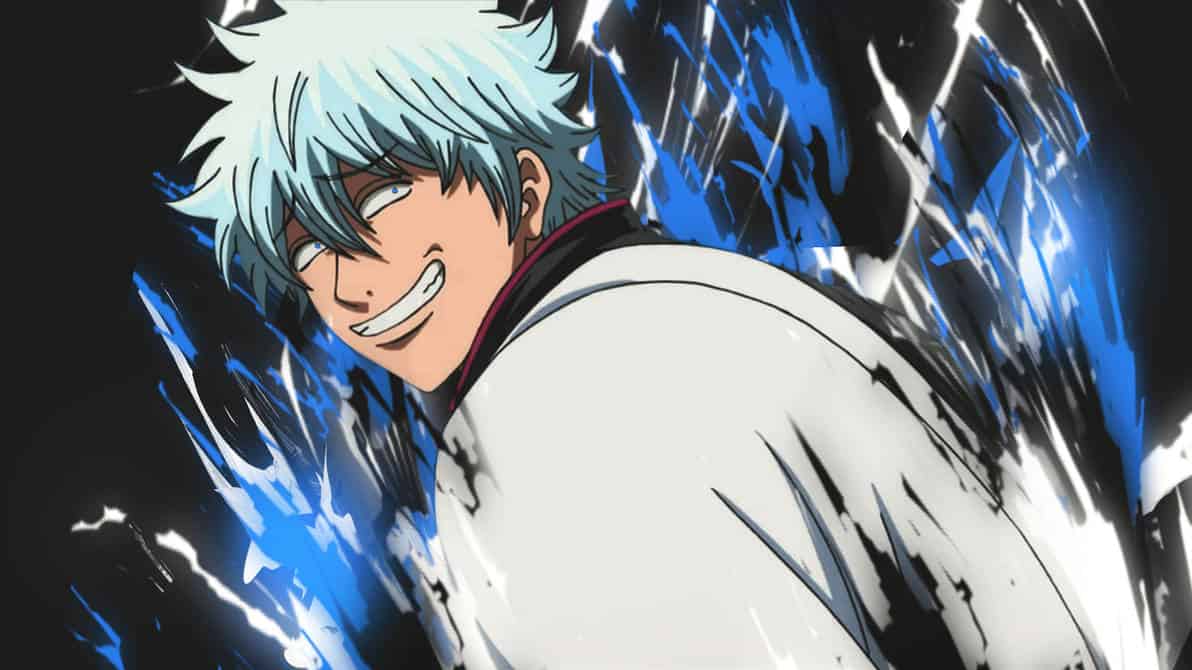
Hardcore death battles against numerous monster creatures like Benizakura, Housen, Jiraia, and so on set the stage for the events to unfold. You won’t be able to sleep for being so excited about each fight. Gintoki’s history is slowly being revealed as the story progresses. Things like his conversation with Shouyo-sensei and the days of the ancient conflict come to mind.
Gintama may have a simple premise at first, but the show’s writers turn it on its head with a clever and funny tale that grows and evolves over time. But hold on! The Gintama manga continues to provide many hilarious types of comedy despite the more serious tone of the show.
The twist in the narrative is completely original. A fantastic moral for society can be found in each episode, and the episodes all have their own distinct flavor.
The varied tastes of the segment ensure that the book never becomes boring. Gintama has an excellent storyline for a television show. Simply said, it’s a masterwork that keeps drawing you back for more.
2. Dragon Ball (1986)
Goku, the protagonist’s kid, attacks Bulma in the first episode because he thinks her automobile is a monster. Goku removes his clothes and uses his tail to catch a huge fish, but he soon discovers that it won’t be enough to sustain him.
His naiveté and timidity endear him to his peers. Using her sexual urge to attract a male is Bulma’s driving force, which would be laughable in a realistic film but endearing here since she’s a teenager.
Toriyama obviously enjoyed creating this surreal world resembling a comic strip where his imagination could run wild. When Krillin comments about an odorous opponent, Goku points in the direction that Krillin continues to have a nose, breaking the fourth wall and making the audience laugh.
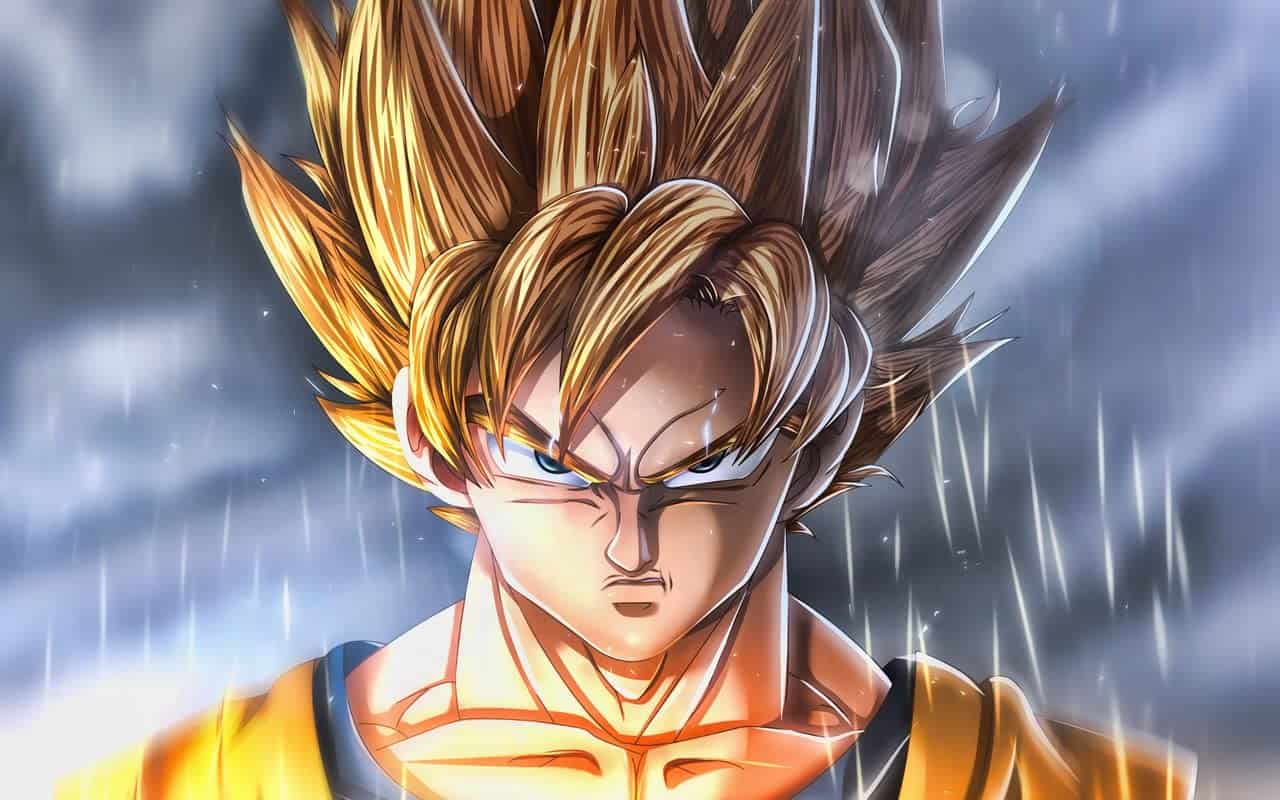
The anime takes many cues from bad kung fu flicks, so of course, there will be fight scenes. They’re about as funny as you’d hope for in a TV anime from the 1980s.
It’s obvious that the writers of this show have a deep appreciation for kung fu flicks and Chinese mythology since the show opens with a parallel depiction of the classic Journey to the West. The show develops and becomes much more impressive as it goes on.
However, these tropes are employed within the context of a fantastical, magical world during which pigs can talk and transform, and a terrible nosebleed caused by the sight of a girl’s underwear is used to locate an invisible opponent.
Dragon Ball Z has flexed muscles, men shouting, and energy balls being thrown about, but the lighthearted, spontaneous humor of the original anime is barely hinted at. Especially in the very initial few episodes, Dragon Ball is a comedic, adventurous serial with some serious overtones.
1. Tengen Toppa Gurren Lagann (2007)
Toppa Tengen, The world of Gurren Lagann, is one in which humans have built vast subterranean colonies to protect themselves from the Spiral King and his armed forces, who rule the surface.
But at some point, Simon the Digger unearths a mysterious weapon he calls Gurren. Simon, Kamina, and Yoko travel the globe and beyond in search of allies and foes to help them in their quest.
There are 27 episodes in all, and they first broadcast in the middle of 2007. The first of the series’ four main story arcs is also the least compelling. After seven episodes, I began to worry that the show wasn’t keeping together as well as I had hoped.
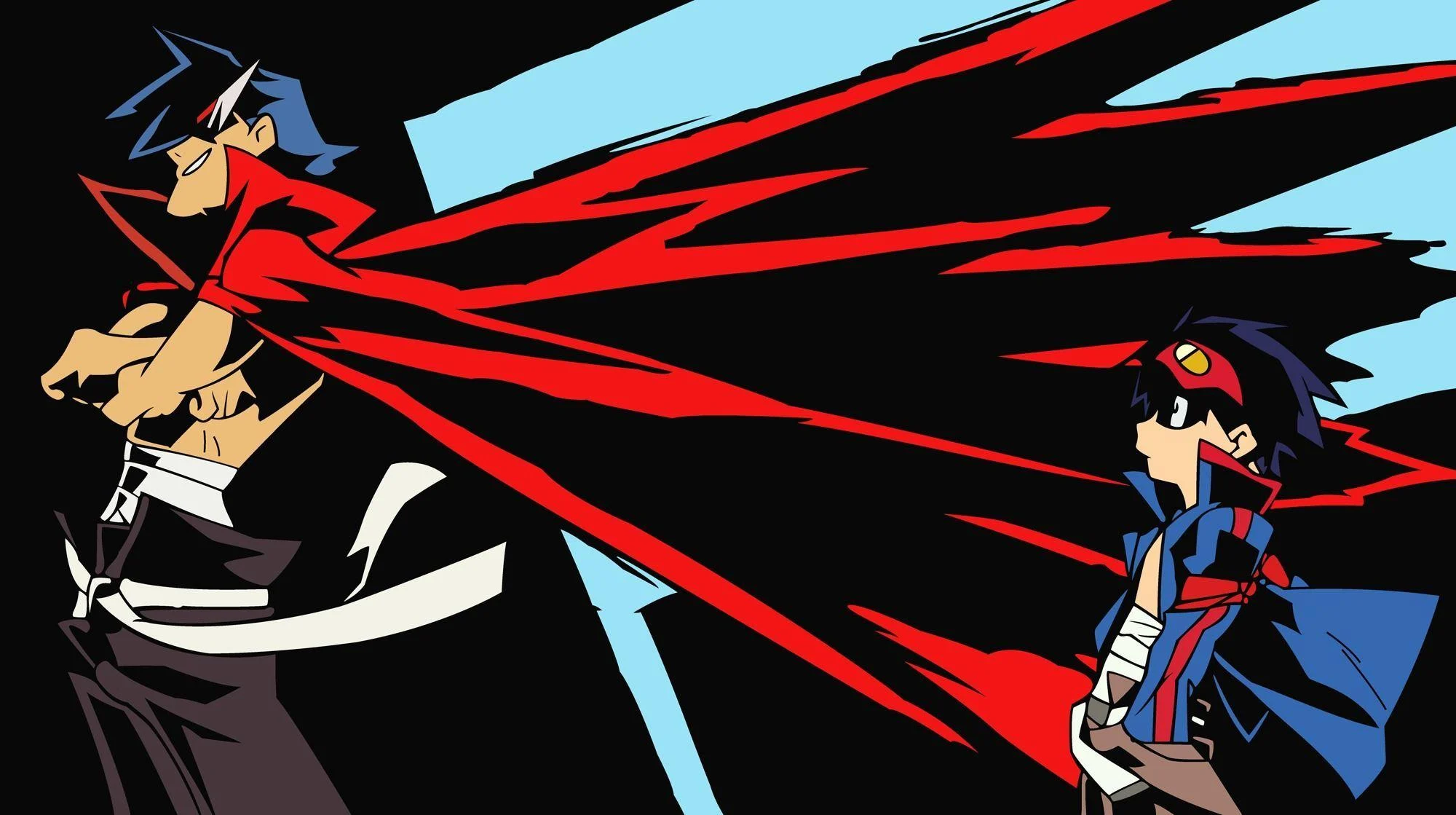
It has the two weakest episodes from the whole series. The first one is particularly awful since it exposes Kittan and his sisters. Furthermore, just because something is a creative decision does not make it a good one.
But other than that, the plot is quite stupid and would have been just padding if it hadn’t introduced such a pivotal figure. The episode set in the hot springs is just as terrible, but it serves no purpose other than to occupy time.
The rest was decent. The enthusiasm I had when watching Gurren Lagann was missing. The fact that Kamina, the protagonist, is consistently depicted as a moron contributes to the issue.
His primary responsibility of setting an example for his other students is one in which he succeeds, but he also has a propensity to get into unnecessary fights and refuse to back down.
He’s not quite the archvillain I was expecting. It’s nice to see Simon emerge as a stronger leader, but I still think the show is missing somewhere without him.
My memories of the show are more accurately reflected in the story’s climactic battle for Teppelin and Simon’s showdown with Lordgenome. A massive surge of encouraging propulsion that helps you keep moving forward.

